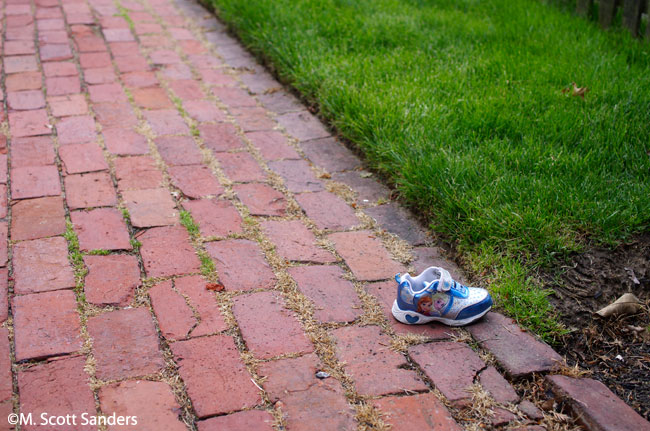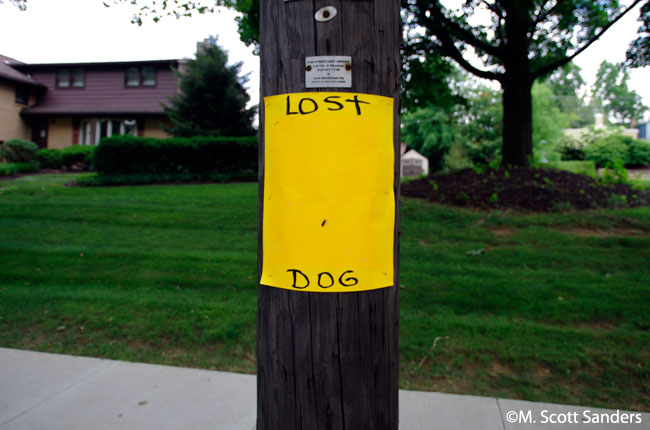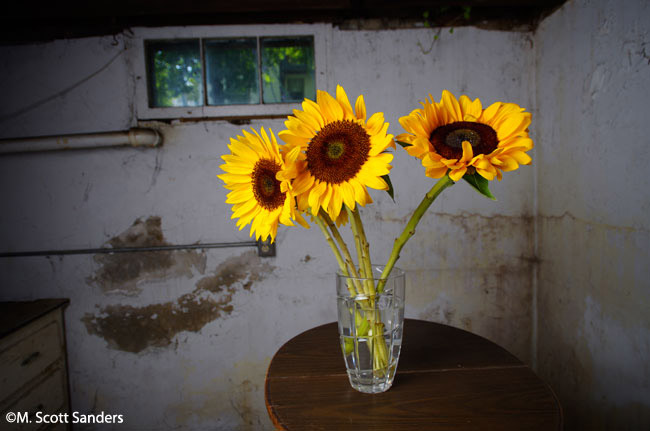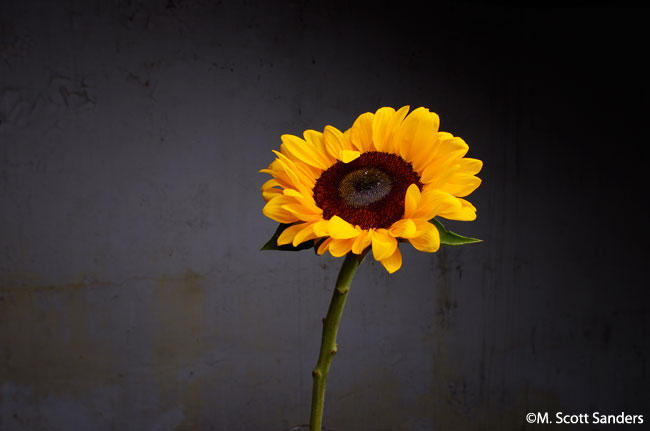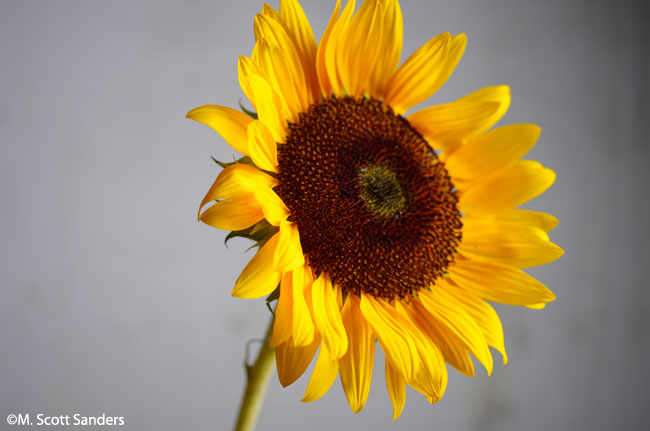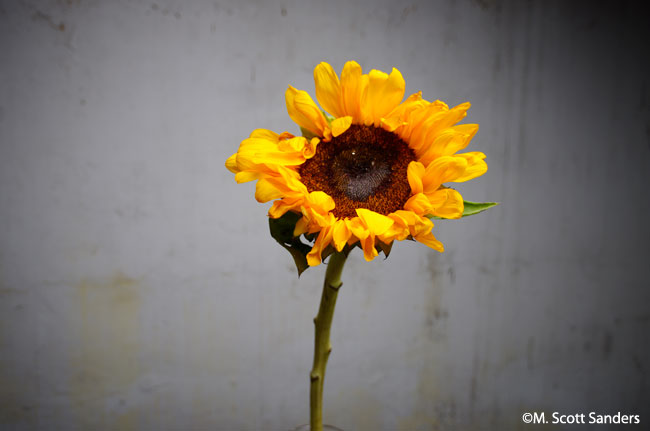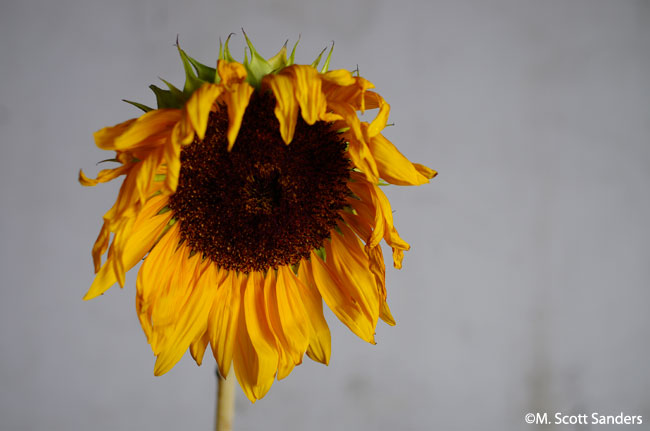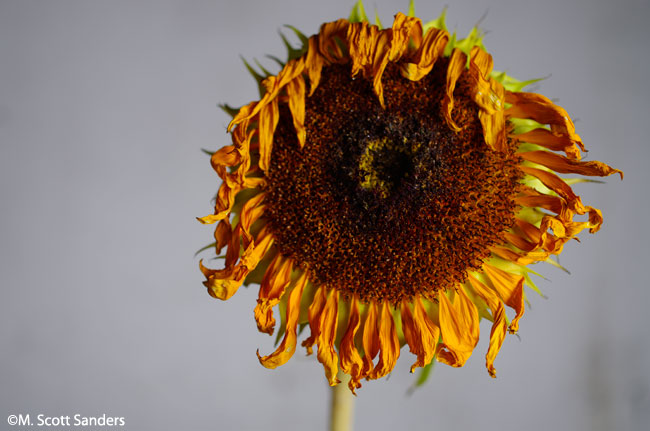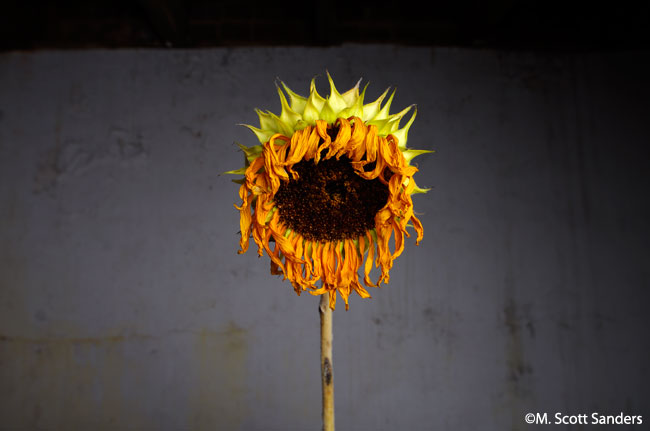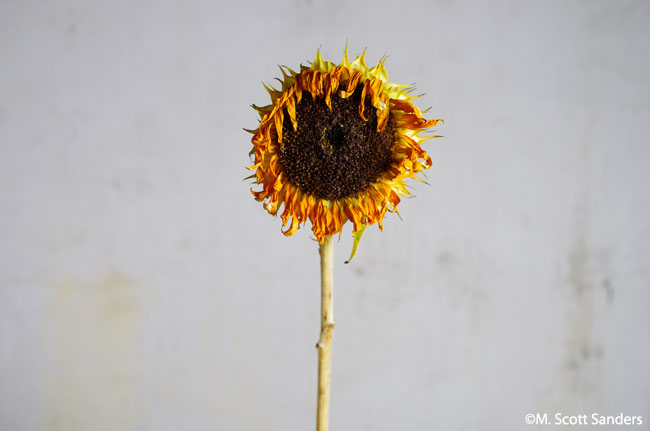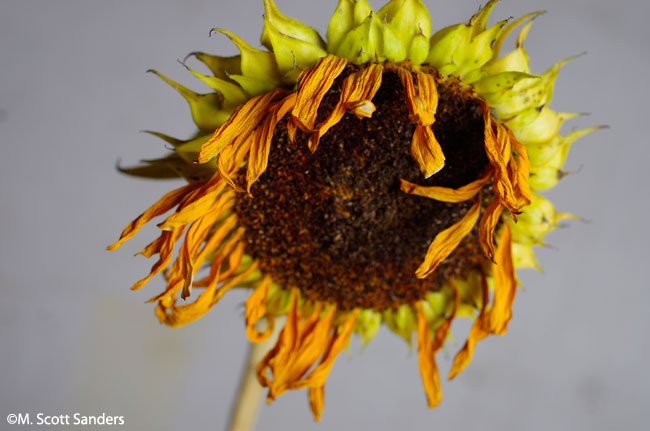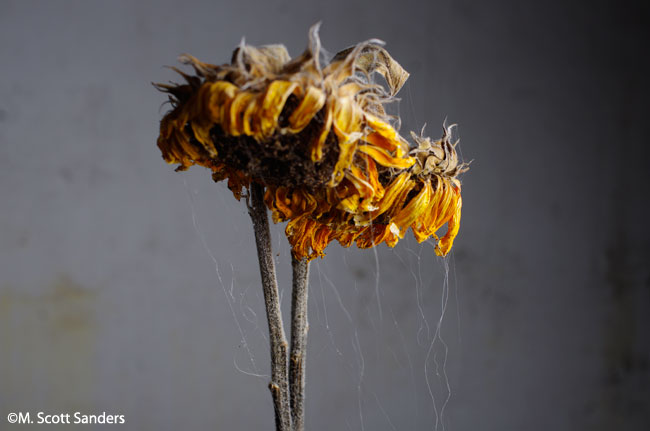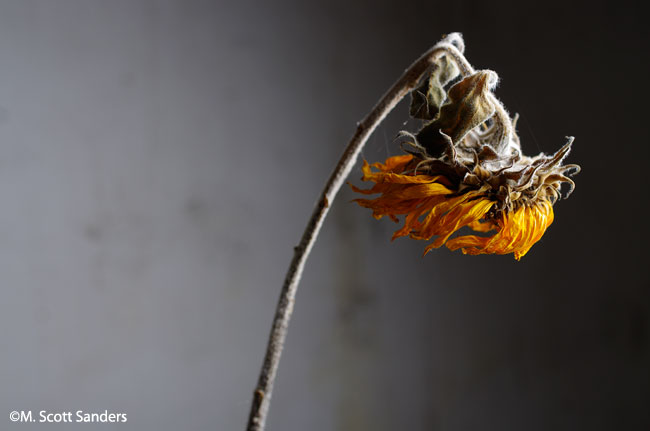Since we last met, the summer ended and the fall arrived. I continued to write and take a few pictures, but nothing momentous or amazing was going on, so I was feeling like I would need to post something just to post something. And that’s never good.
By the time we got to October, it was time for vacation, and for Daytona Beach, which I figured would give me something to write about. Storms had come through as they had the year before, but instead of flip-flops and glasses and televisions washing up on shore as they had during Matthew, all we got this year was seaweed. And not just seaweed, but SEAWEED.

We visited the St. Augustine Lighthouse, which was something we wanted to do for a long time and never got around to:
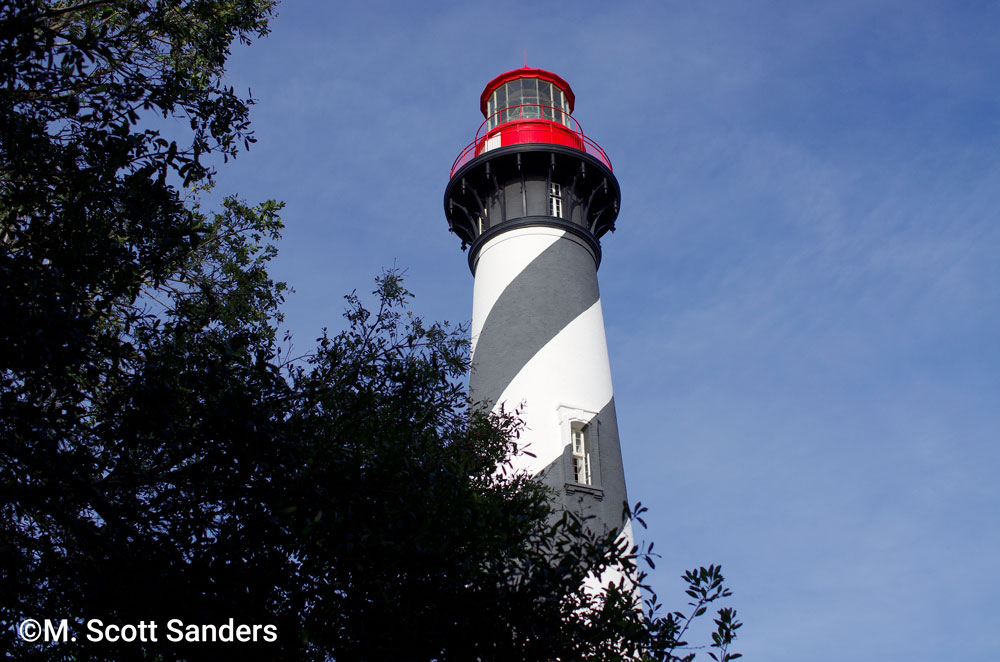
All of this was interesting, and I admired the photographs as I got home, but overall I didn’t feel like anything happened. We went to the beach, we ate seafood, we listened to the ocean at night, and yet, when it was all done, I didn’t feel like much of anything happened and I didn’t feel like our vacation felt like a vacation. Not true, of course, as I look back on it. But a malaise is a malaise, I didn’t post anything, and I wasn’t really taking much, if any, pictures.
So the question is, when you feel like this, what do you do about it?
You don’t talk about things. You do things. The lack of photography was really getting to me and I wanted to go out and take pictures, but by this time it was November, and November in Allentown is not the most photogenic. Most times, I’ve avoided the dark, dreary scenes that punctuate the coming winter in eastern Pennsylvania, and certainly with the way I was feeling, such images would seem to be truly counter-productive. I sat on the idea for about a week, and then I said to myself that I had to do something.
So I drove around. The sun was bright and the weather was cold. I had a shot in mind, something I had seen a few days before. Nothing momentous, just the winter sun on a fence:
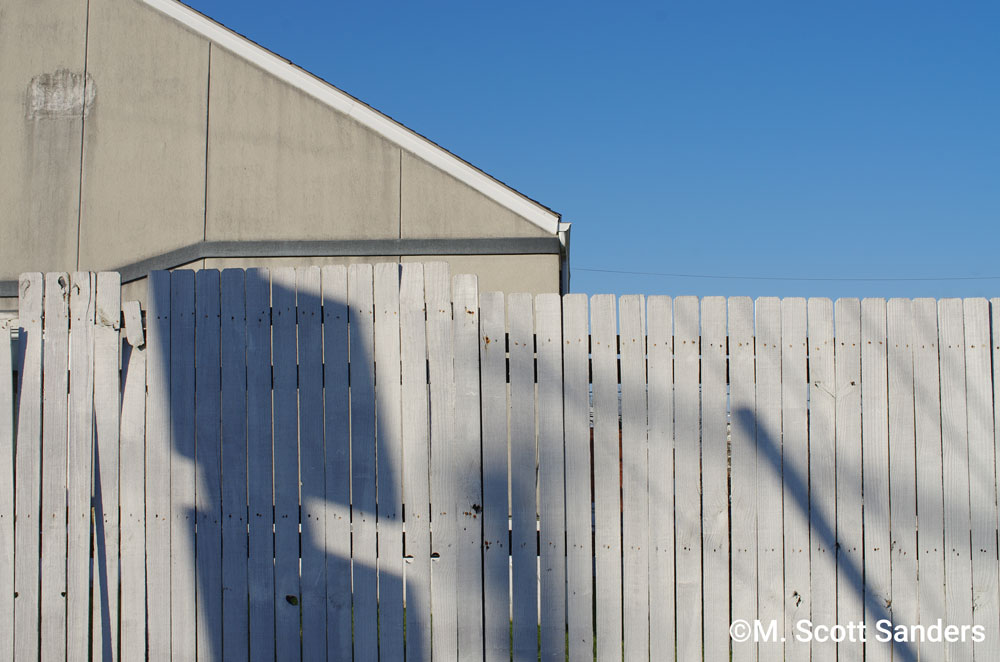 But it was a start. I drove in to the city with another shot in mind. There was an old variety store downtown with a “Teem” soda sign, a rarity even in the day when it was put up. Unfortunately, it didn’t exist anymore, and I ended up driving around. Along the way, I spotted a woman in the window of a diner, so I shrugged my shoulders, and took a shot out the passenger’s side:
But it was a start. I drove in to the city with another shot in mind. There was an old variety store downtown with a “Teem” soda sign, a rarity even in the day when it was put up. Unfortunately, it didn’t exist anymore, and I ended up driving around. Along the way, I spotted a woman in the window of a diner, so I shrugged my shoulders, and took a shot out the passenger’s side:
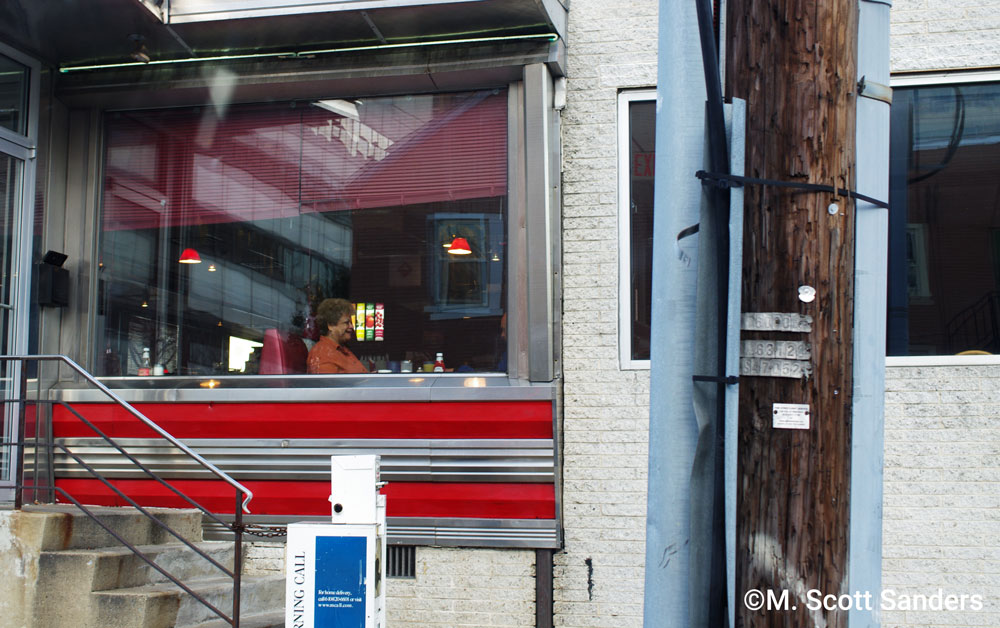 I didn’t know if what I was doing was art, but it was certainly making me feel like I was doing something. During the next few weeks, when I found a free moment, I just started driving around Allentown, taking shots at whatever I saw.
I didn’t know if what I was doing was art, but it was certainly making me feel like I was doing something. During the next few weeks, when I found a free moment, I just started driving around Allentown, taking shots at whatever I saw.

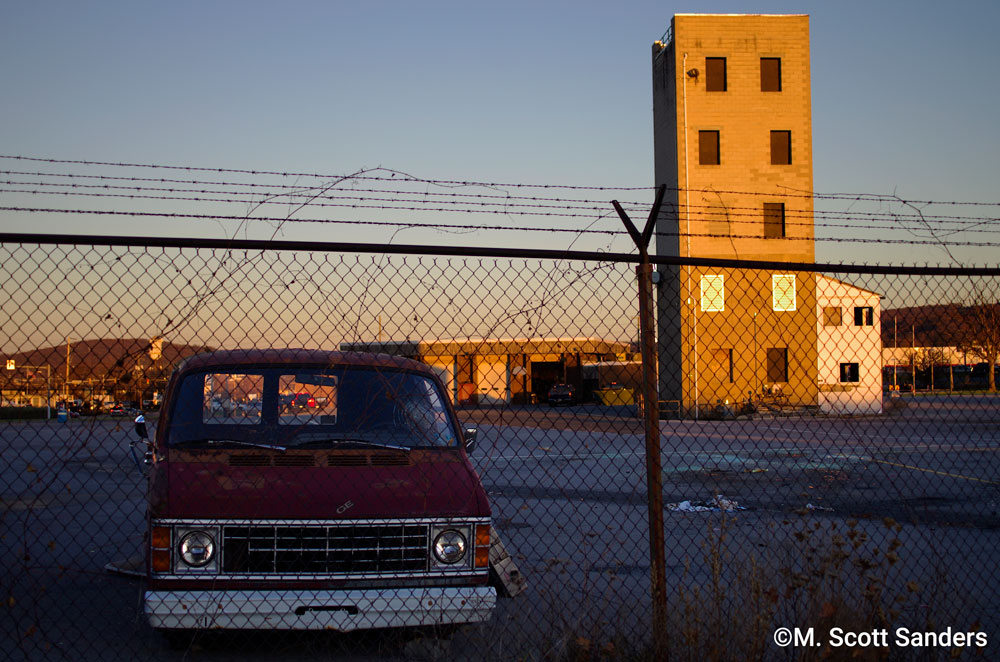
It rained one night and Laura had a hair appointment, so I carted myself out to get some shots. I went by Zandy’s trying to recreate a shot I had made earlier, only this time I brought my tripod. And when I say tripod, I mean, a 16-year-old aluminum and plastic bit of off-brand nonsense that can barely hold the weight of my camera. It was raining a lot, so I stayed inside the car and tried to wrestle with this beast to make it stand straight enough to take a decent shot out of the window.
This is not an easy thing to do.
The rain was cascading in through the driver’s side window. I was flopping all over the seats, trying to get a somewhat decent angle. The locks on the tripod legs slipped and put the camera at an angle, causing me to reset and lock them again. The locks slipped again, and the whole process started anew. In the end, I took about four shots, only one of which was close to what I wanted to get.
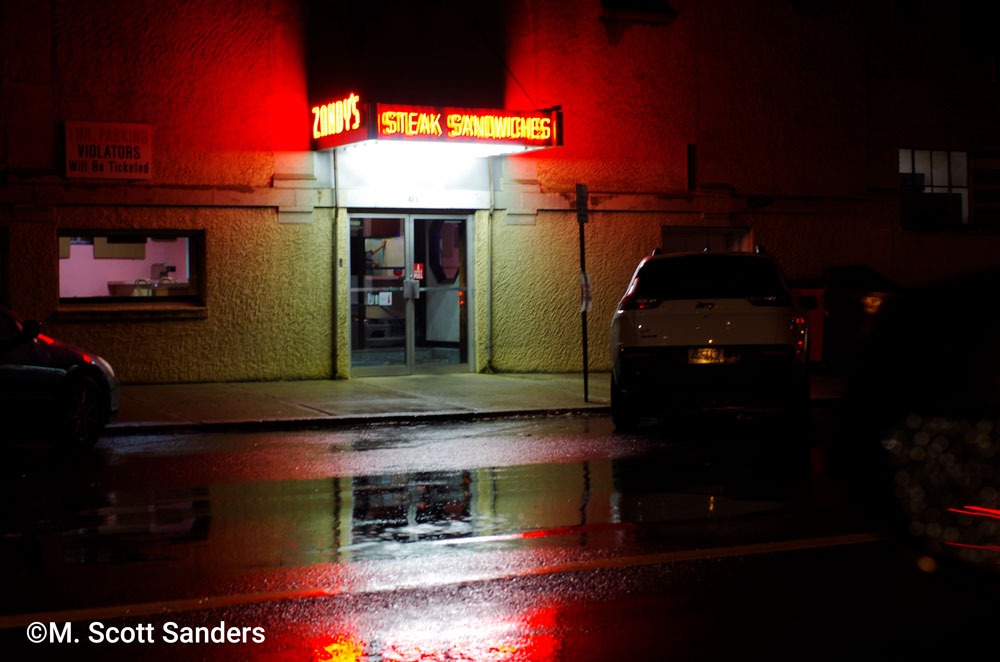
A while ago I mentioned that I had a job as a photographer/videographer at a Catskills resort when I was in my late teens. One day, I got chastised for taking shots of things that weren’t paying customers, and it’s one of those things I think about almost every time I press the shutter. I know I shouldn’t, but I do.
In light of that, I drove around a little bit more after this, wondering why I take pictures at all. What I was doing was nonsense.
But the more I thought about that, the more I came to the conclusion that I shouldn’t worry about that. Sure, not every image, not every story is going to be a winner, but that shouldn’t stop anyone from doing anything. Nothing’s perfect that first time out, so why stop?
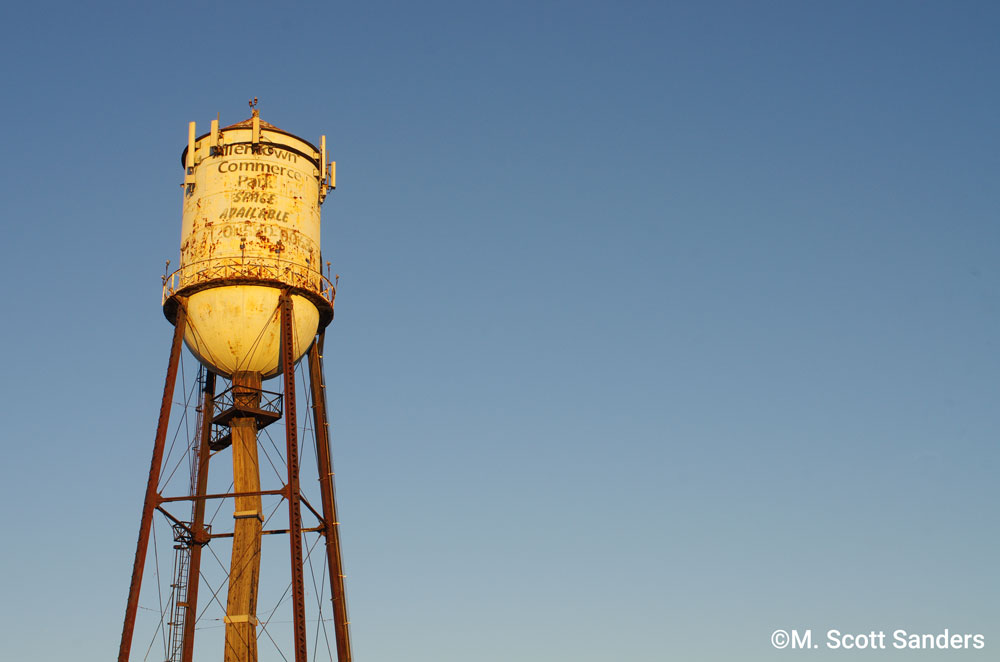
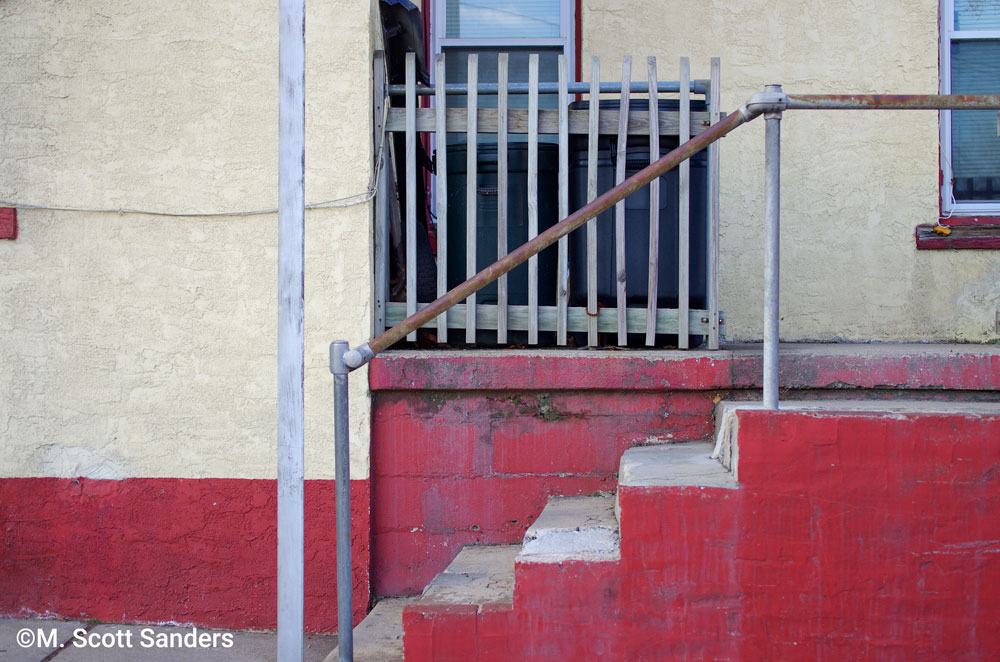
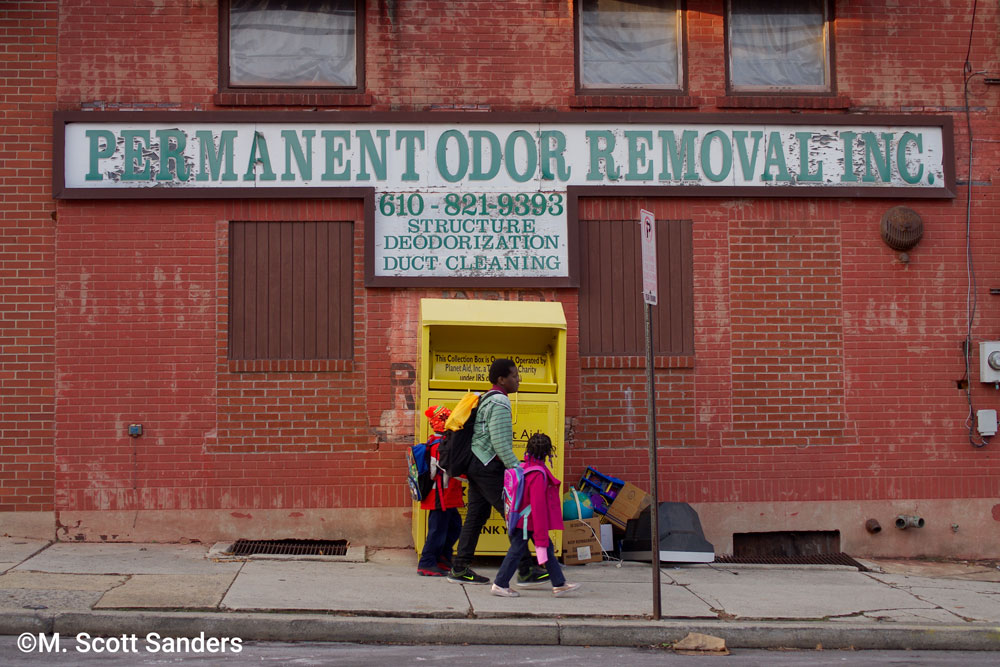
Maybe it’s nonsense, but it’s all important. Even if it’s a failure, you can build on it to become a success. The work, just like life, is always to be continued, because if it stops, then it truly is meaningless. All through the winter, I’ll be trying to take some more shots just like these, and some of them will be OK, some of them may be good, but there will always be something new.

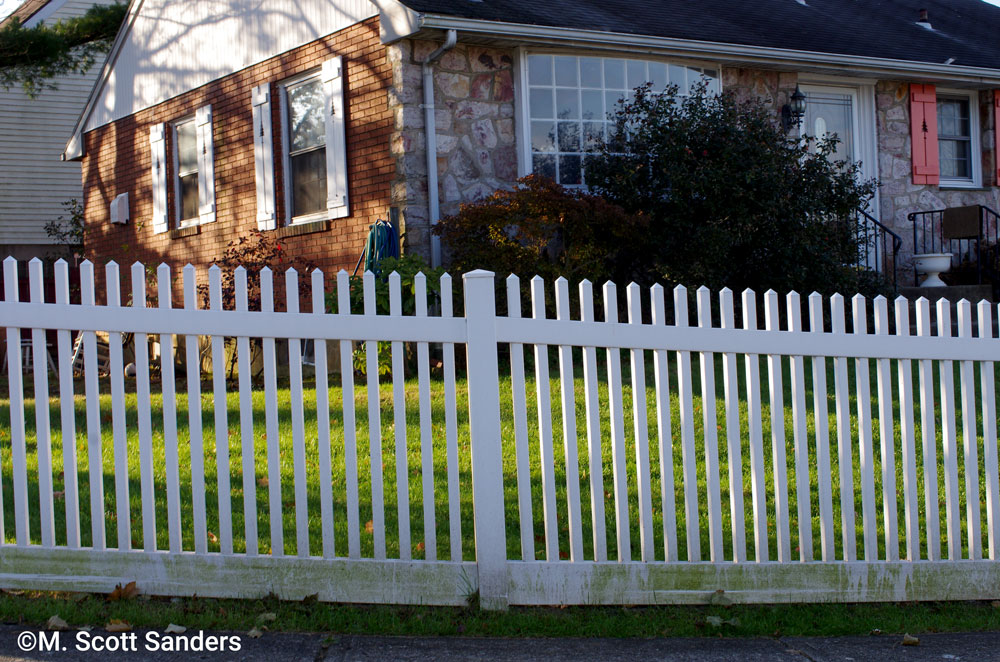
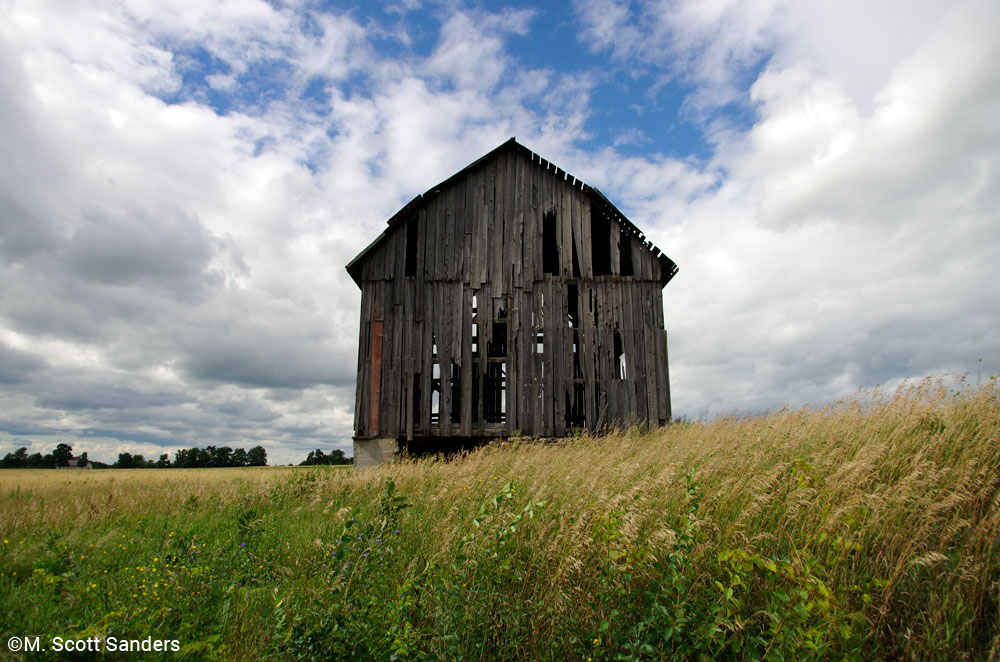
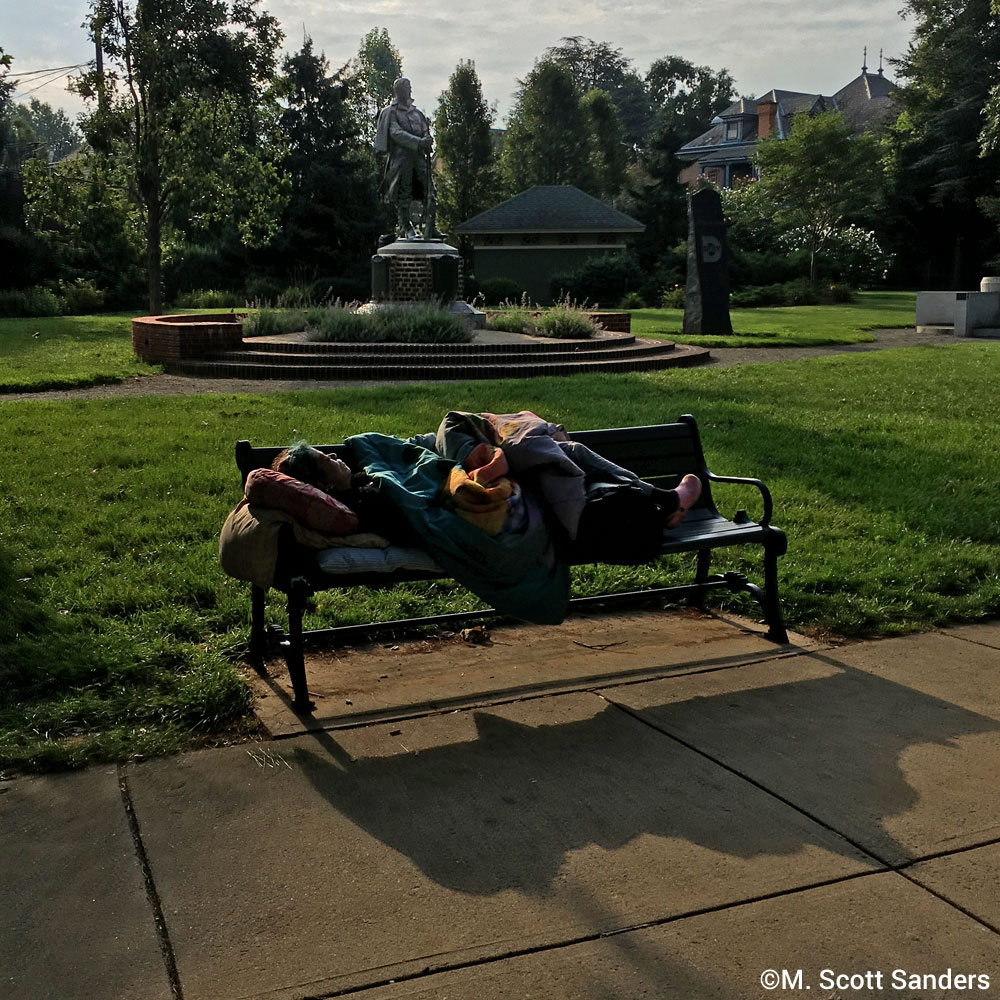
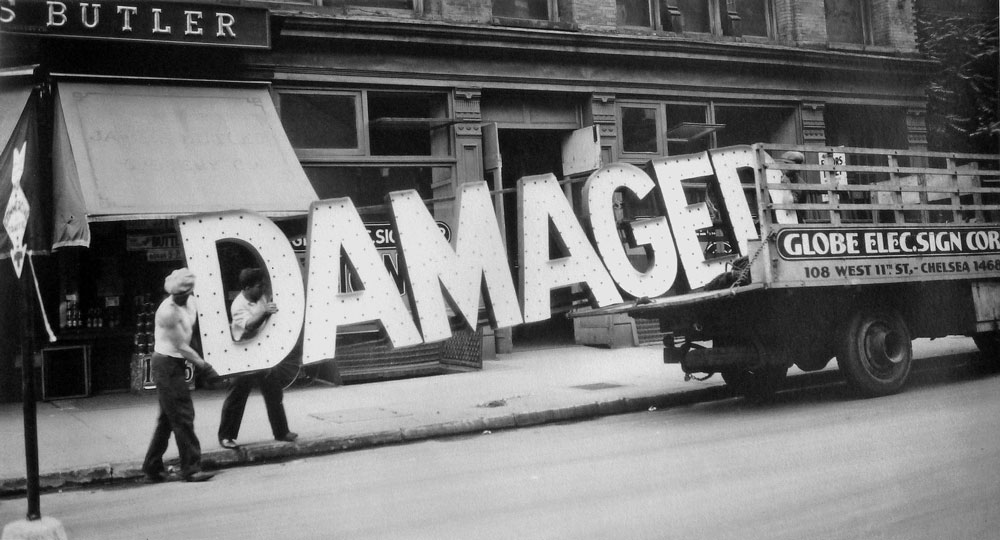
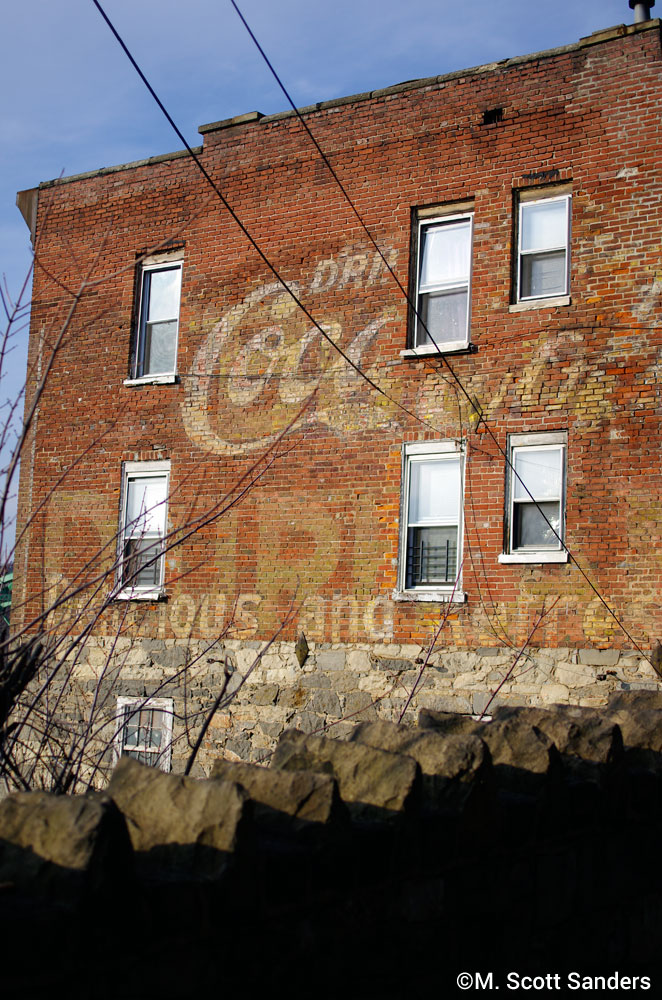 1. Signs (naturally). Neon, old, broken, ghost signs, evidence of the past.
1. Signs (naturally). Neon, old, broken, ghost signs, evidence of the past.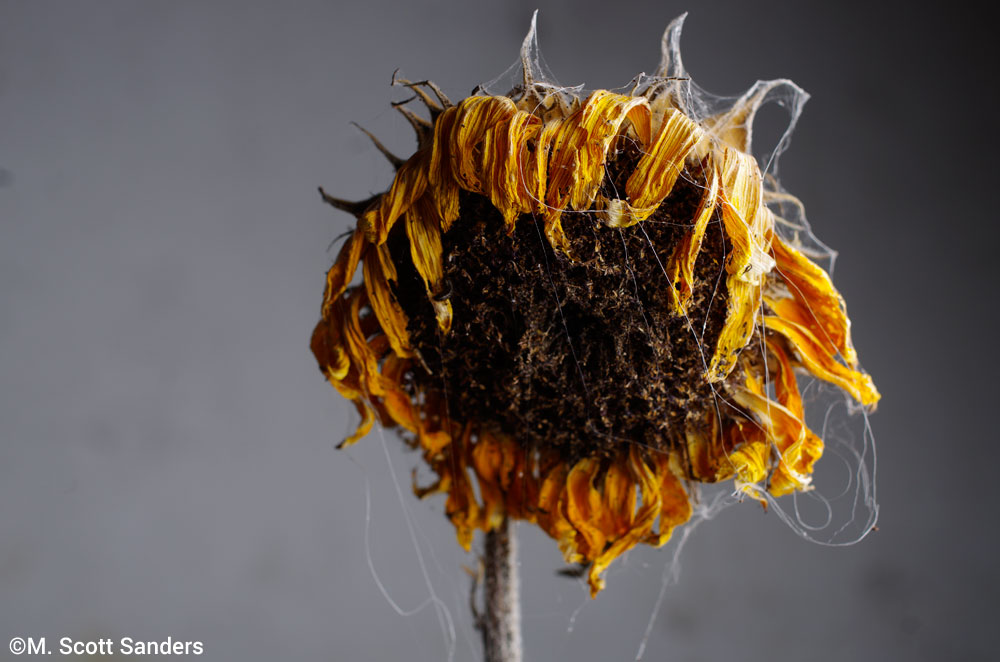 2. Flowers. Dead or alive.
2. Flowers. Dead or alive.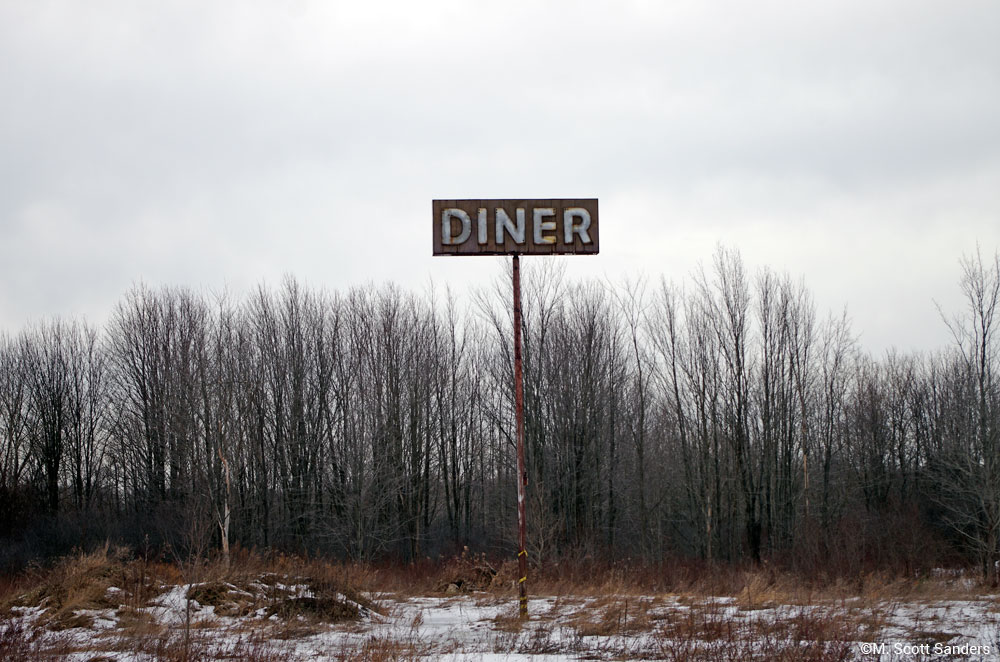
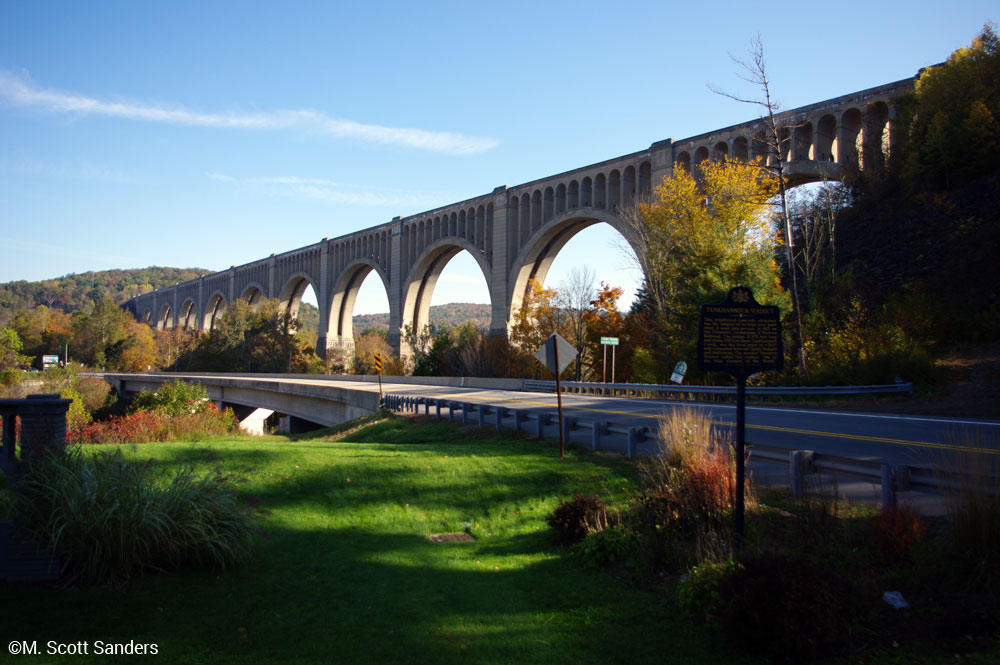
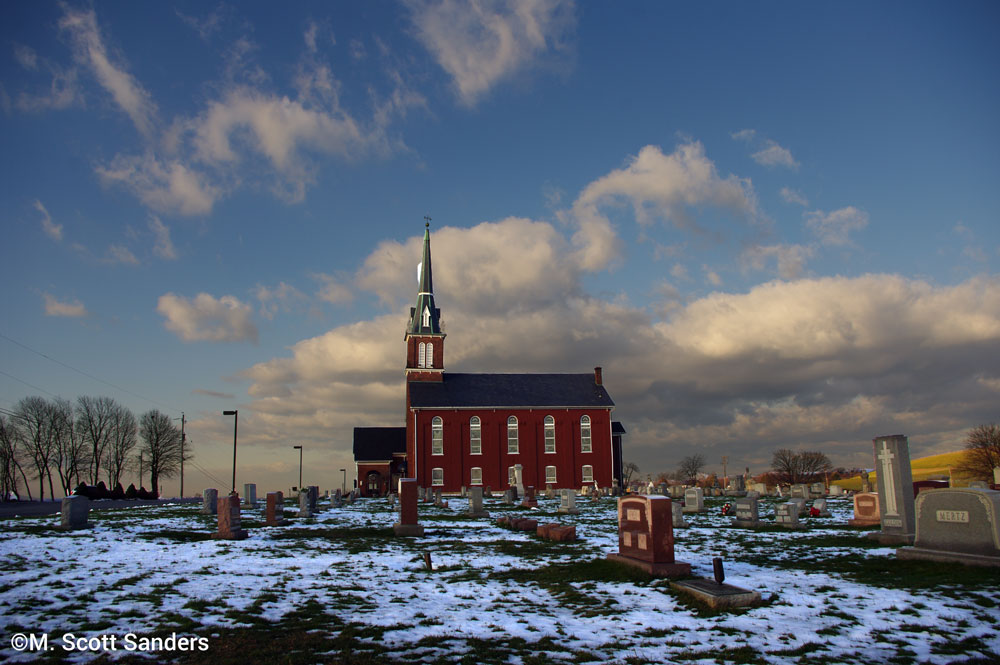
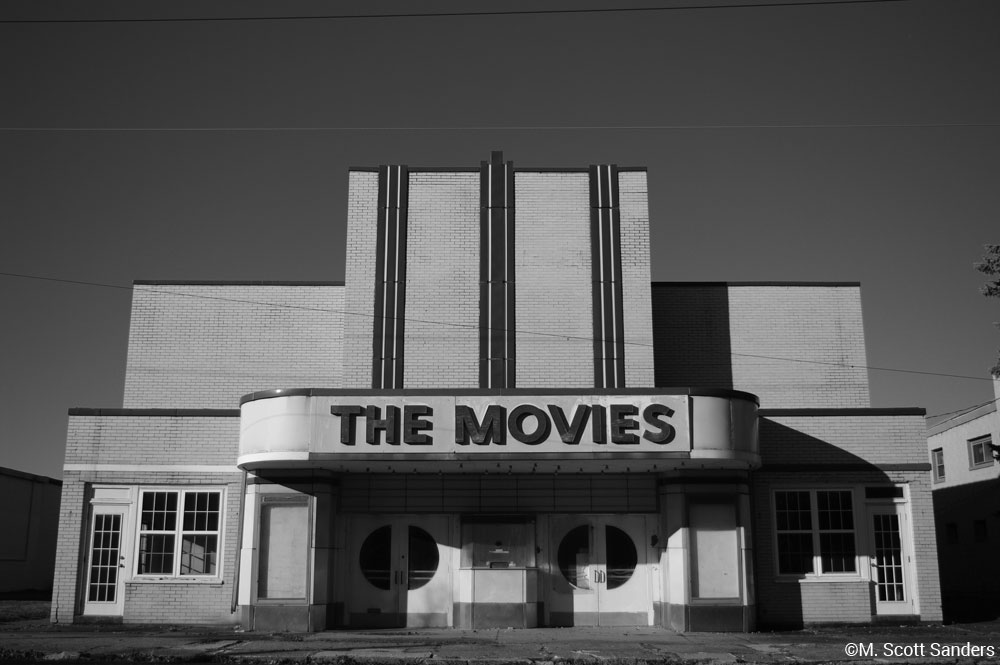
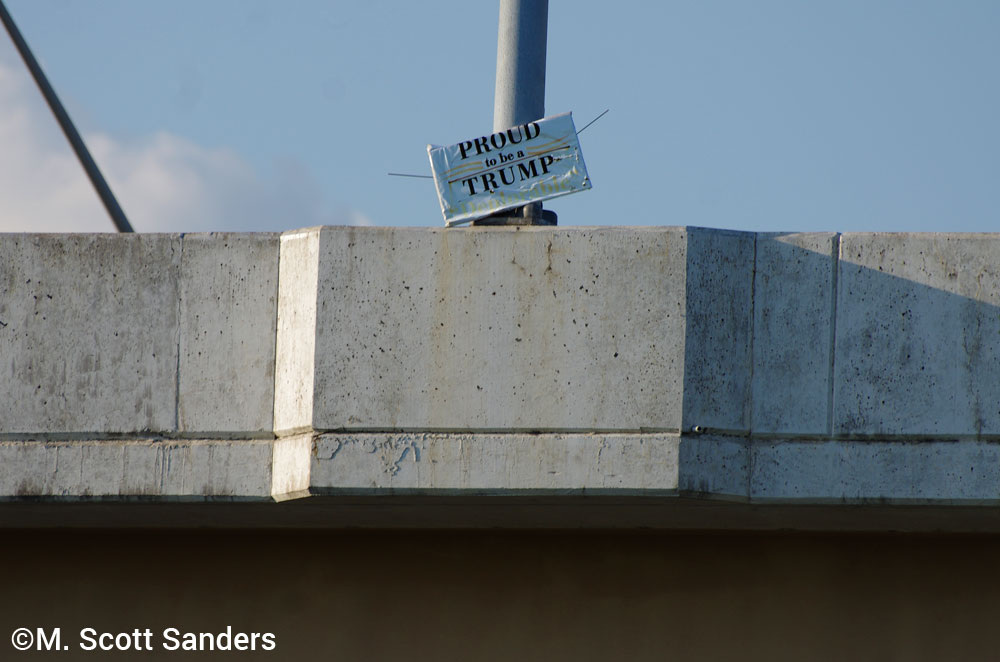
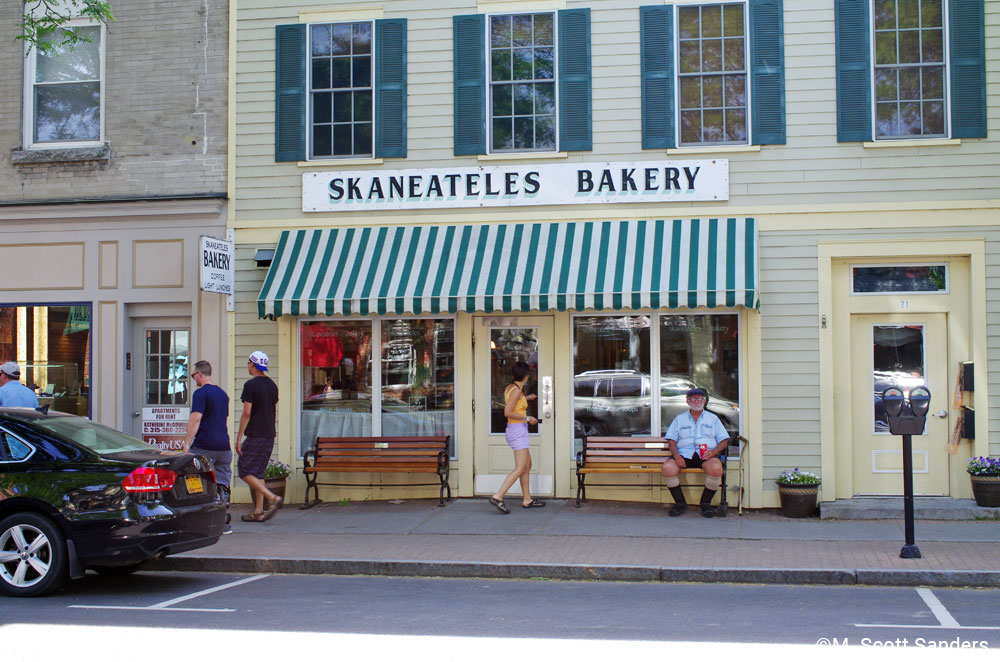
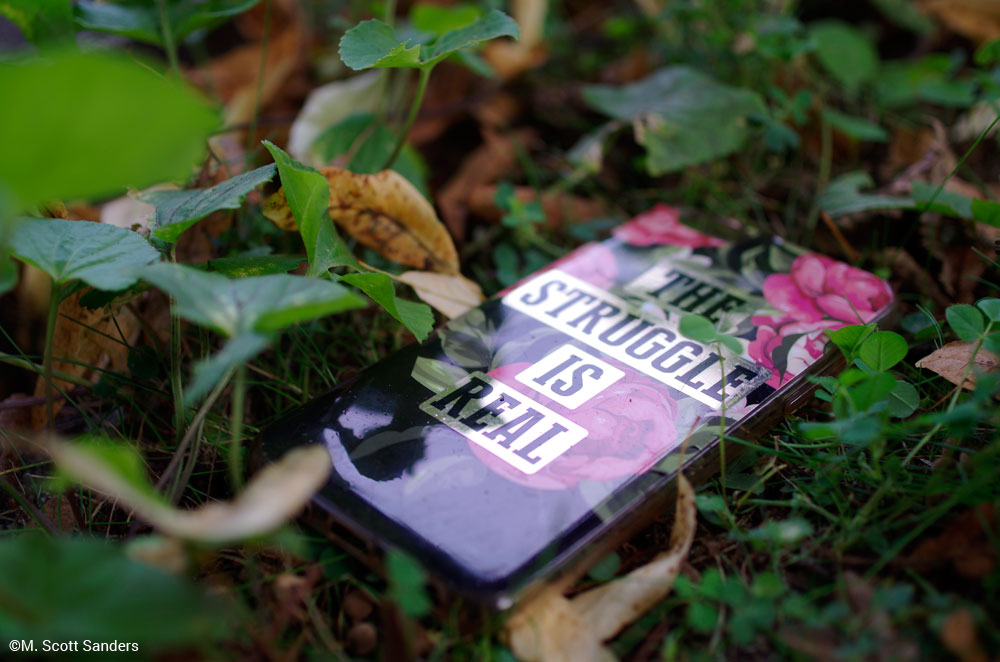
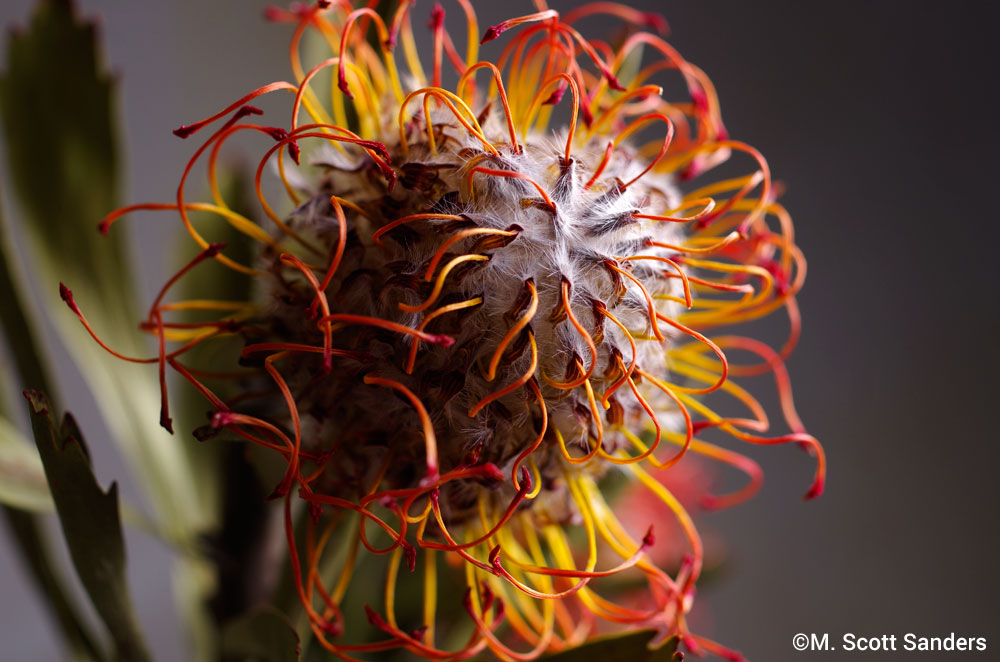
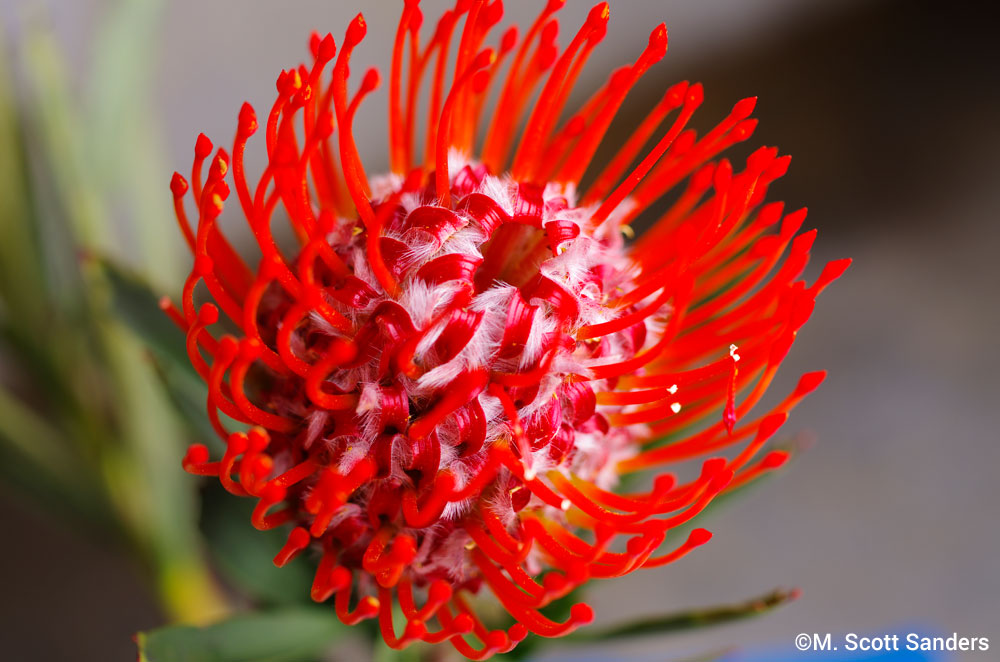 Behold, the pincushion protea. They had two of them, and it didn’t take a second for me to decide that this would be my next subject. I saw the hearty stems, the strange, unearthly center and the curly tendrils on the outside, and I was entranced. This one pictured above also had these wonderful ribbon-like portions woven through it. I couldn’t wait to see what results this would bring.
Behold, the pincushion protea. They had two of them, and it didn’t take a second for me to decide that this would be my next subject. I saw the hearty stems, the strange, unearthly center and the curly tendrils on the outside, and I was entranced. This one pictured above also had these wonderful ribbon-like portions woven through it. I couldn’t wait to see what results this would bring.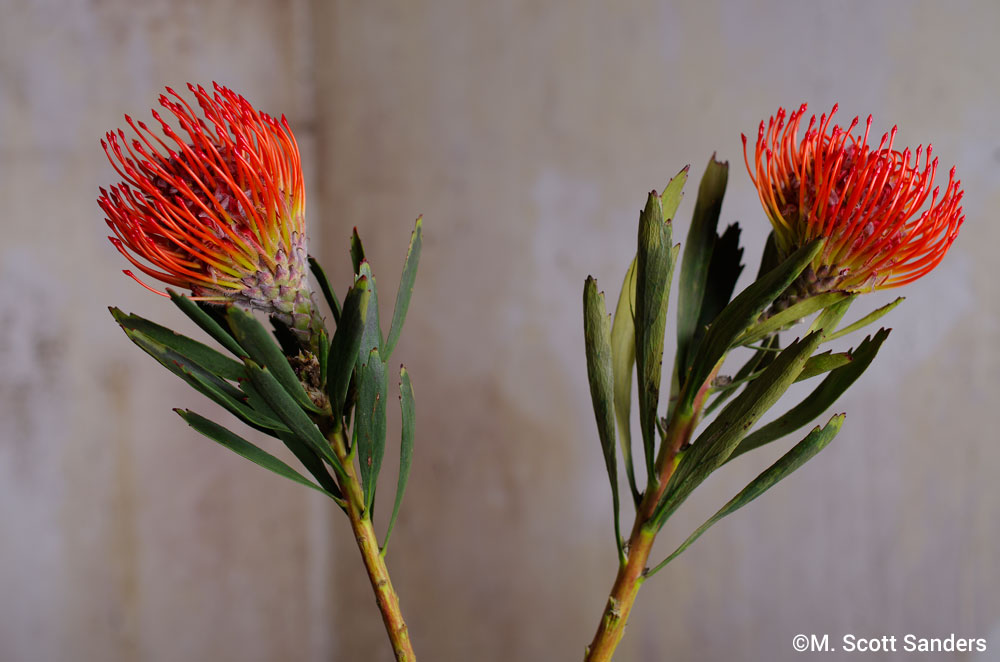 At the nursery, the woman who checked us out lamented, “I love these. We don’t get them in that often. Unfortunately, they don’t last.”
At the nursery, the woman who checked us out lamented, “I love these. We don’t get them in that often. Unfortunately, they don’t last.”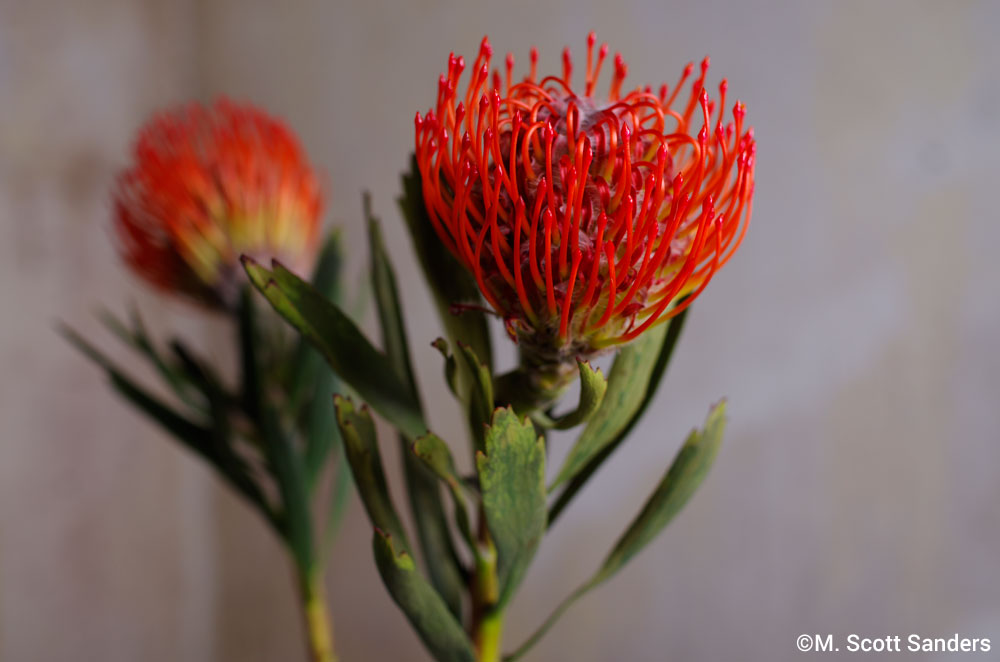 I took this shot on day 1, and I loved the look of it, the almost mirror-like effect. So much so, I decided that for these flowers, I would shoot a similar shot during each session.
I took this shot on day 1, and I loved the look of it, the almost mirror-like effect. So much so, I decided that for these flowers, I would shoot a similar shot during each session.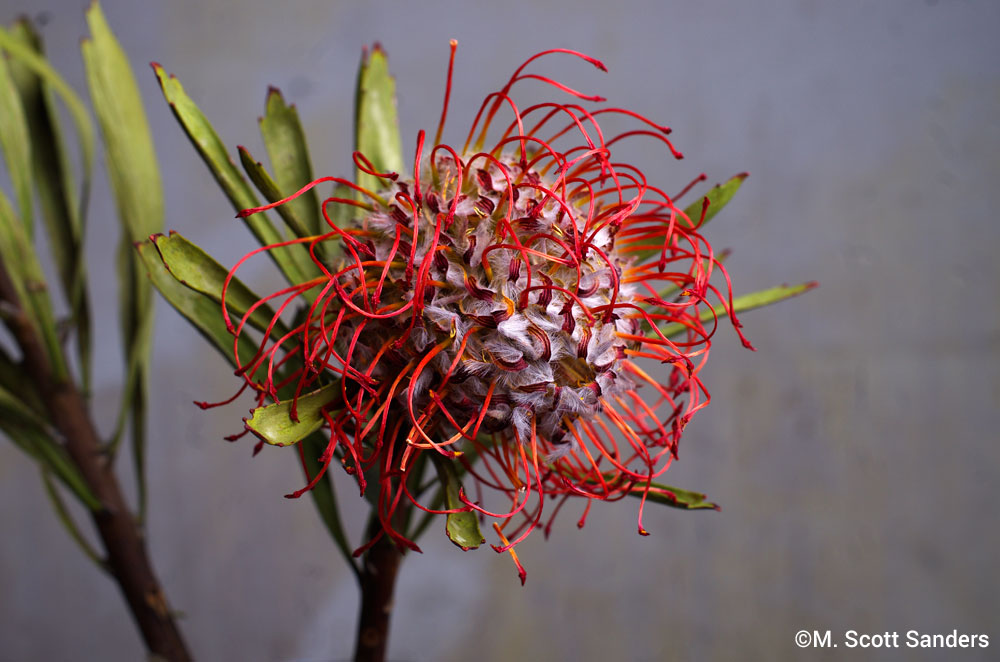 The color had faded and the head had dropped. The beautiful extensions had become disorganized, like unruly hair. I was a bit concerned that the entire flower might just snap off, but it held firm. I carried on with the matching mirror shot—an amazing difference between the two.
The color had faded and the head had dropped. The beautiful extensions had become disorganized, like unruly hair. I was a bit concerned that the entire flower might just snap off, but it held firm. I carried on with the matching mirror shot—an amazing difference between the two.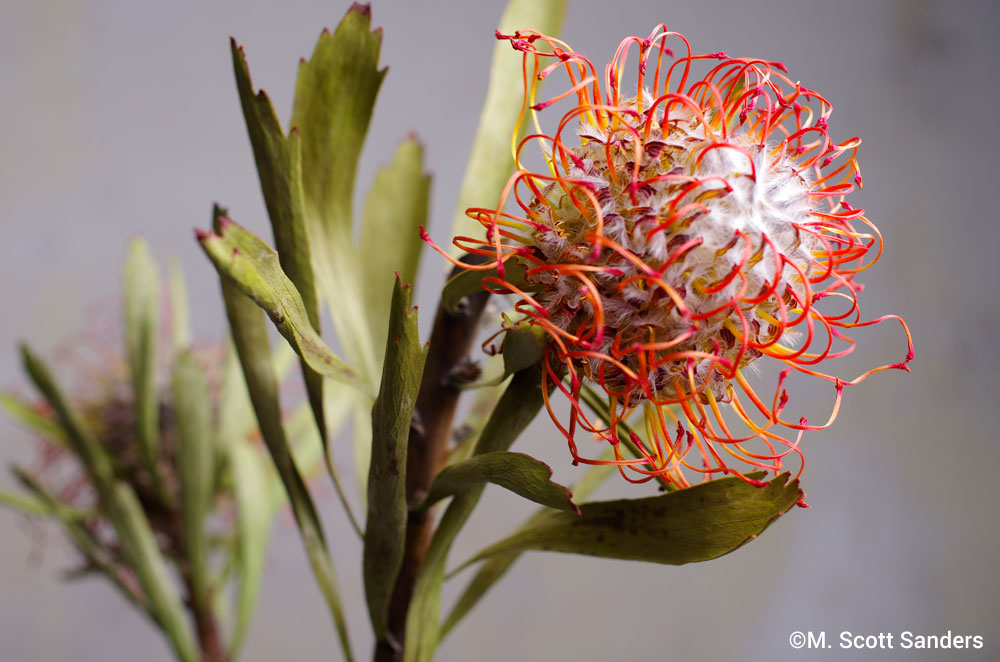 I continued on through to day 10 with the proteas. I might have continued further, but the fact was, they had already become what they were to become.
I continued on through to day 10 with the proteas. I might have continued further, but the fact was, they had already become what they were to become.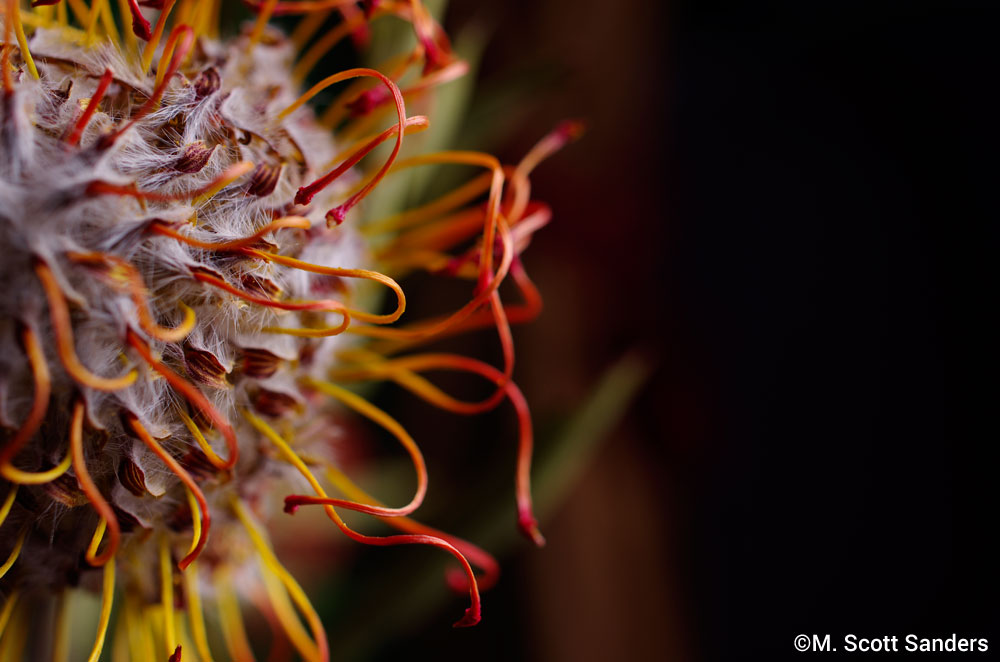
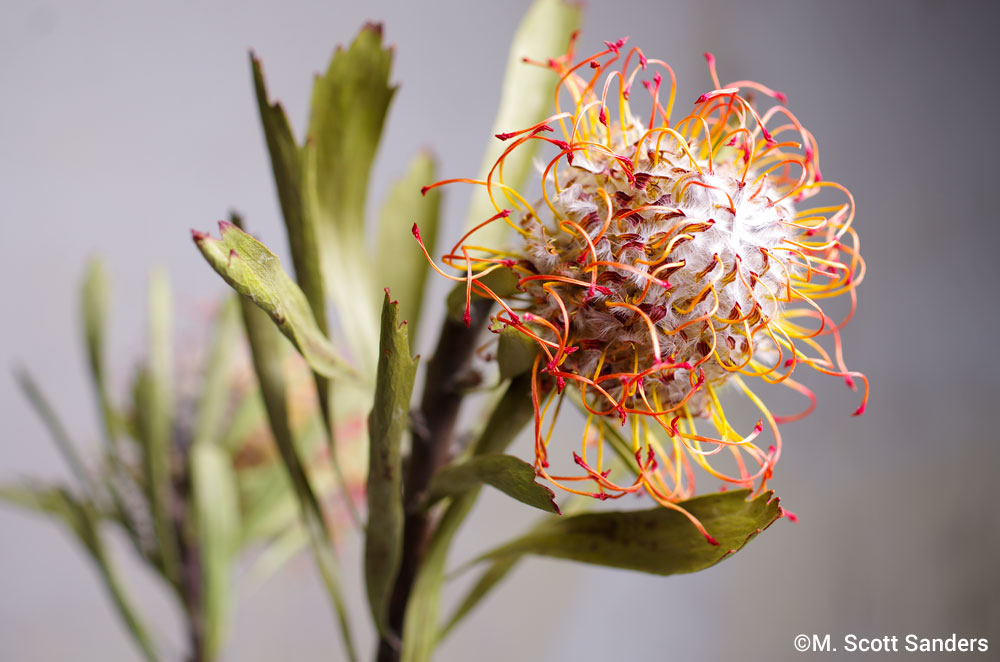
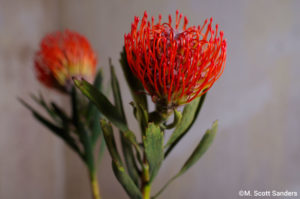
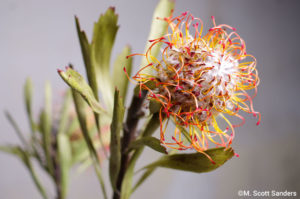
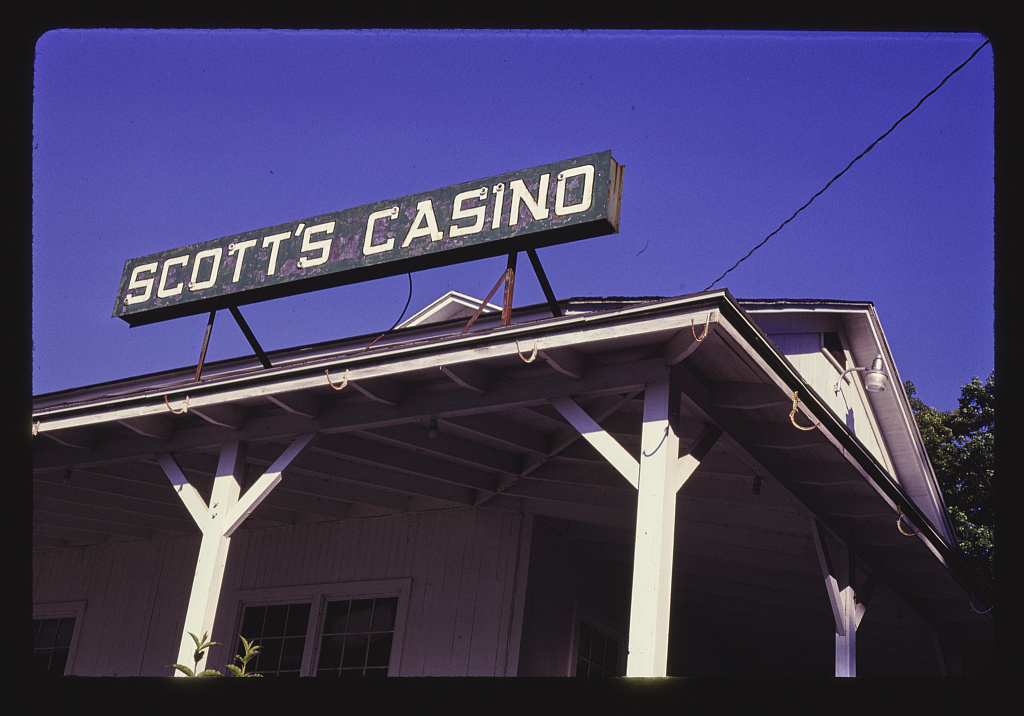
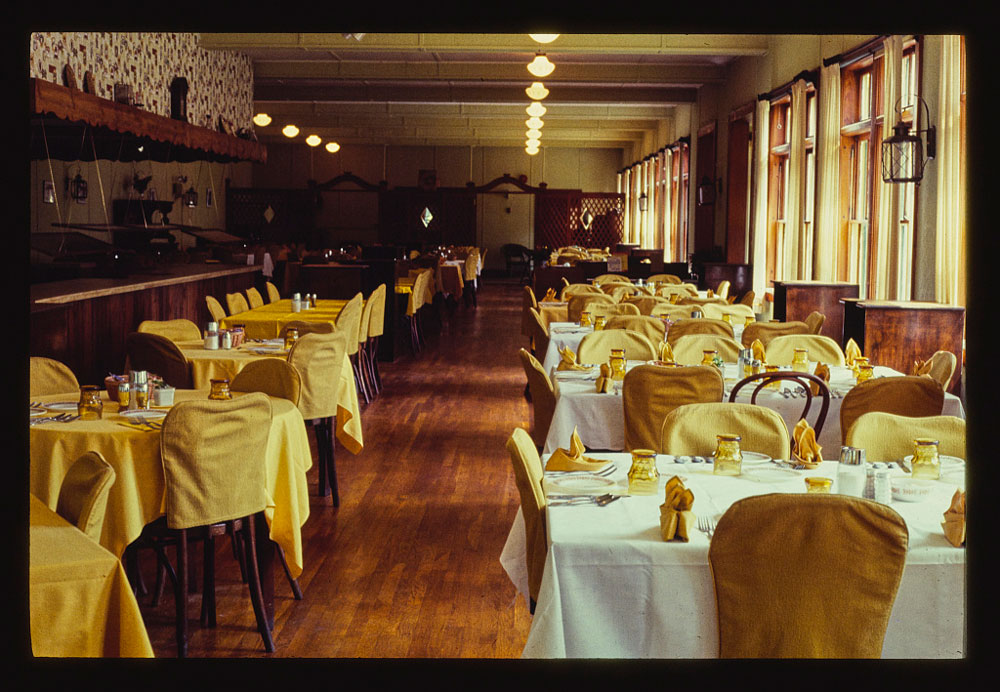
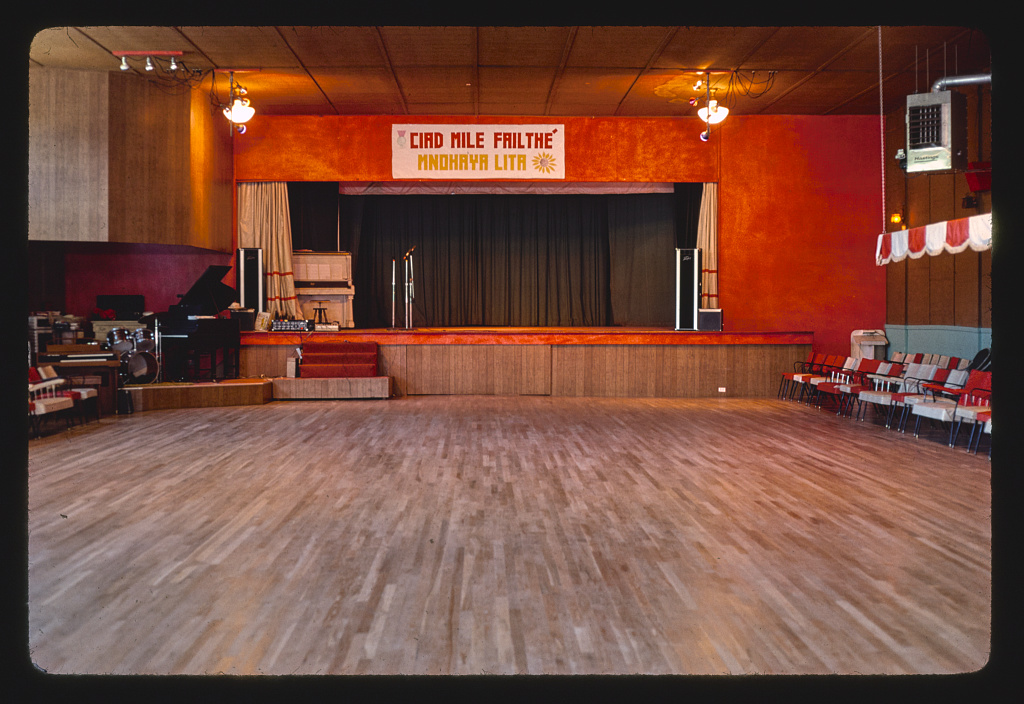
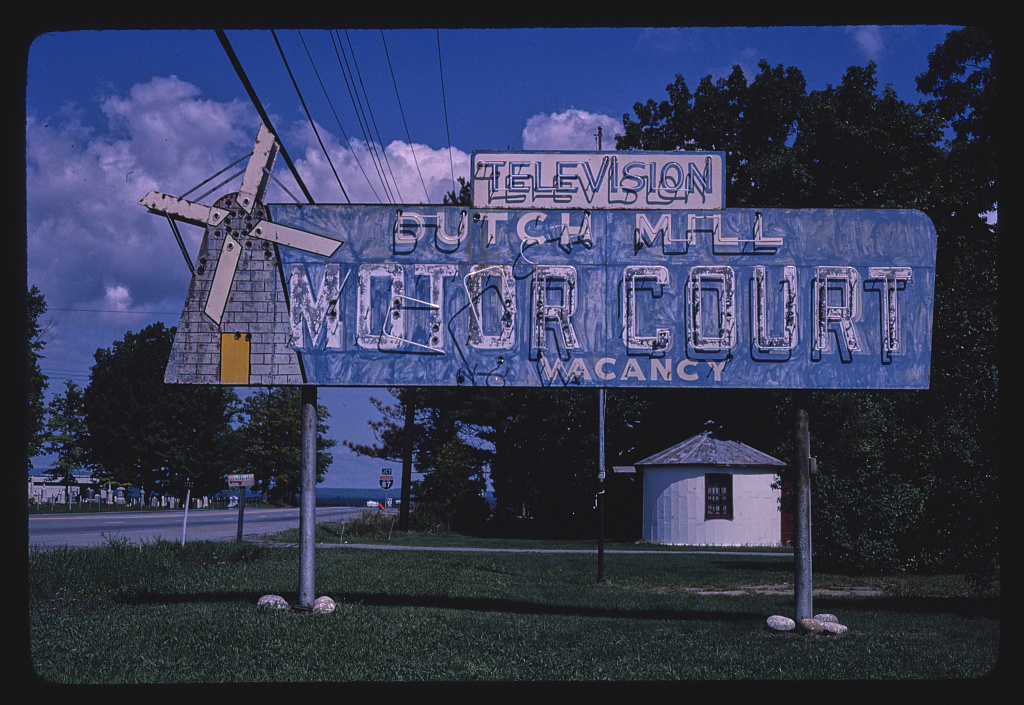
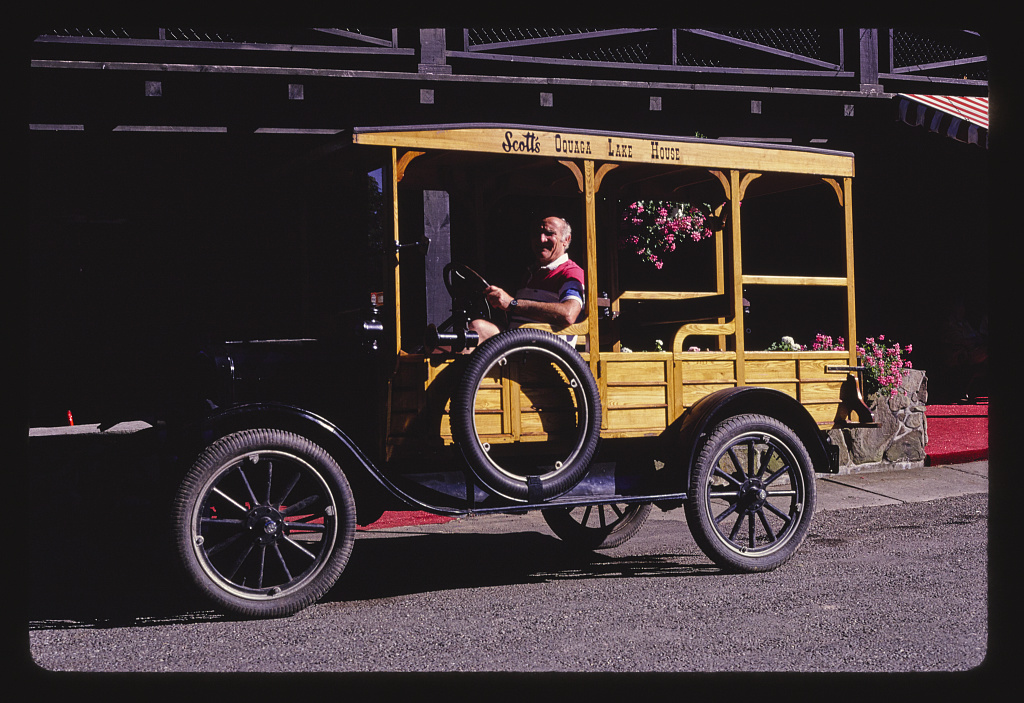
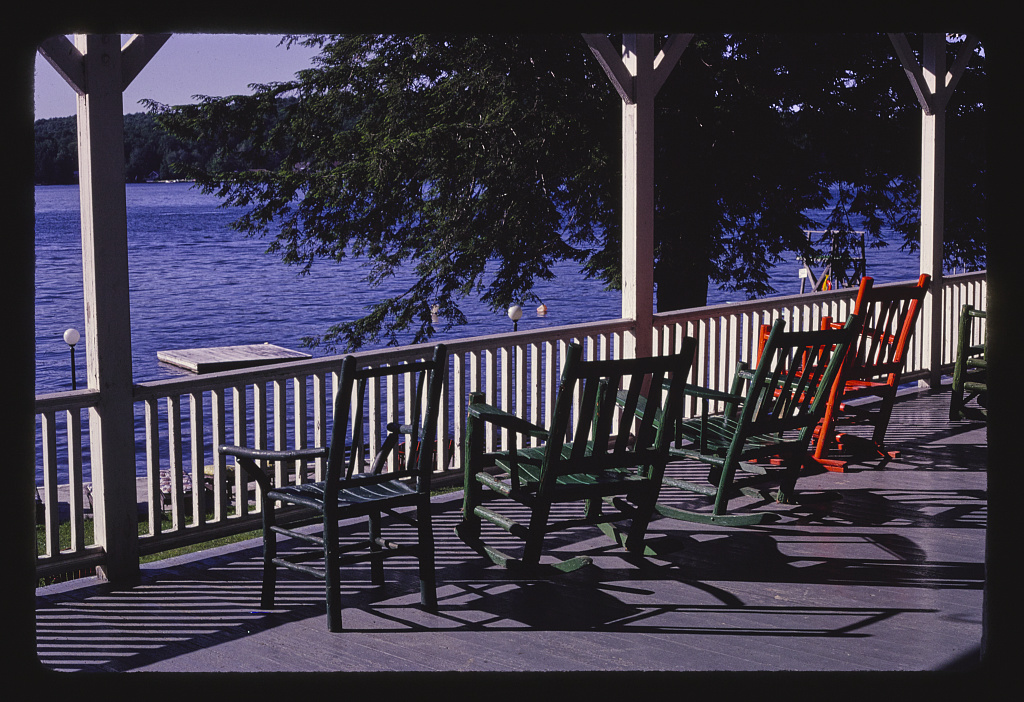
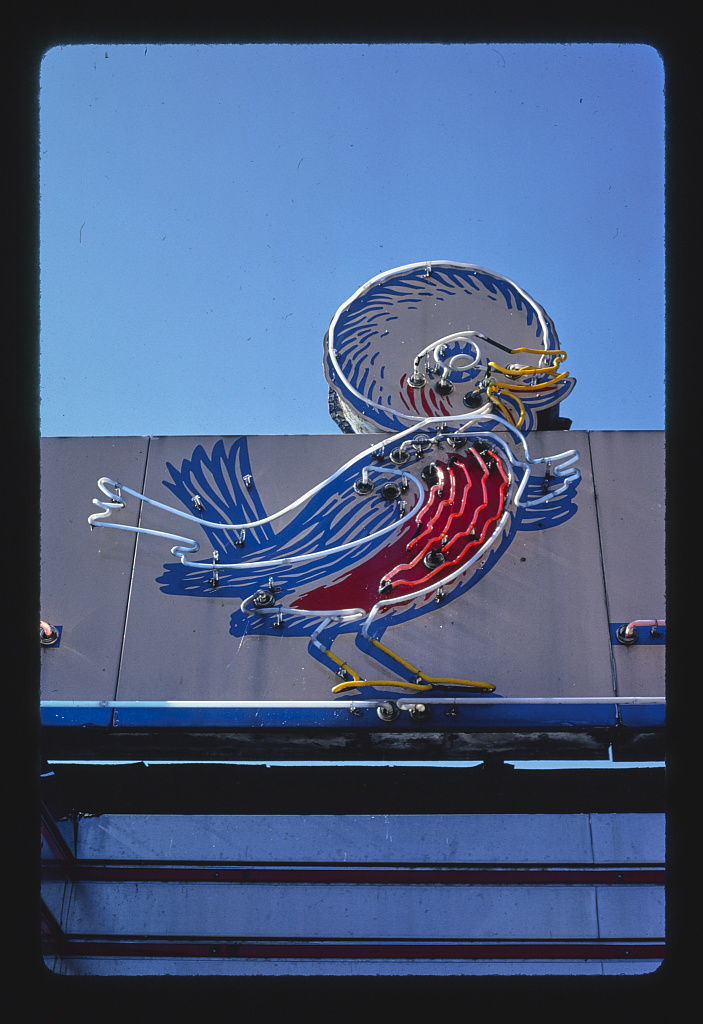
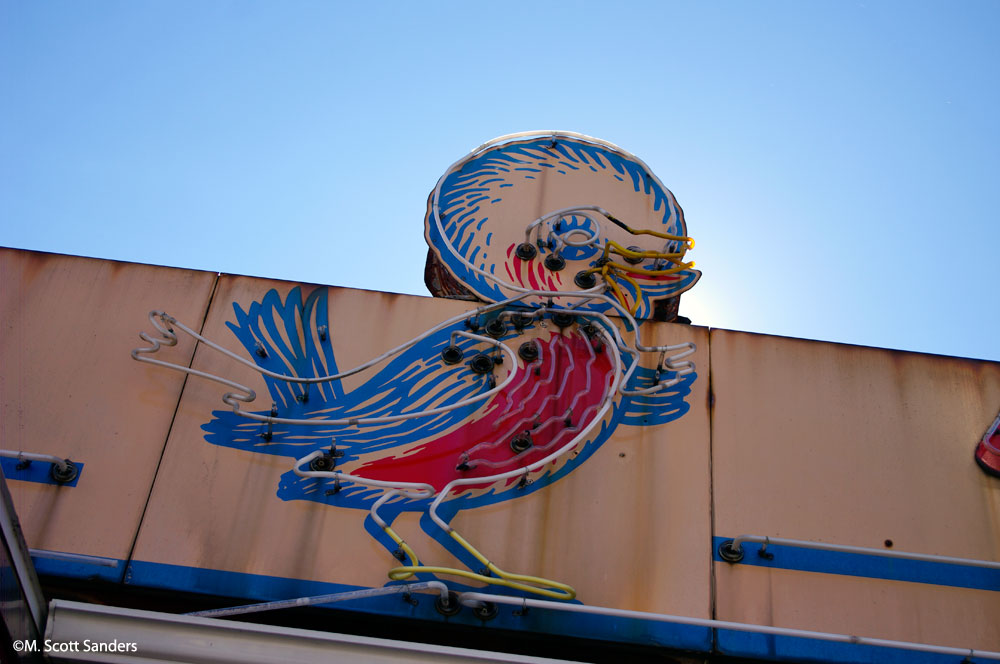
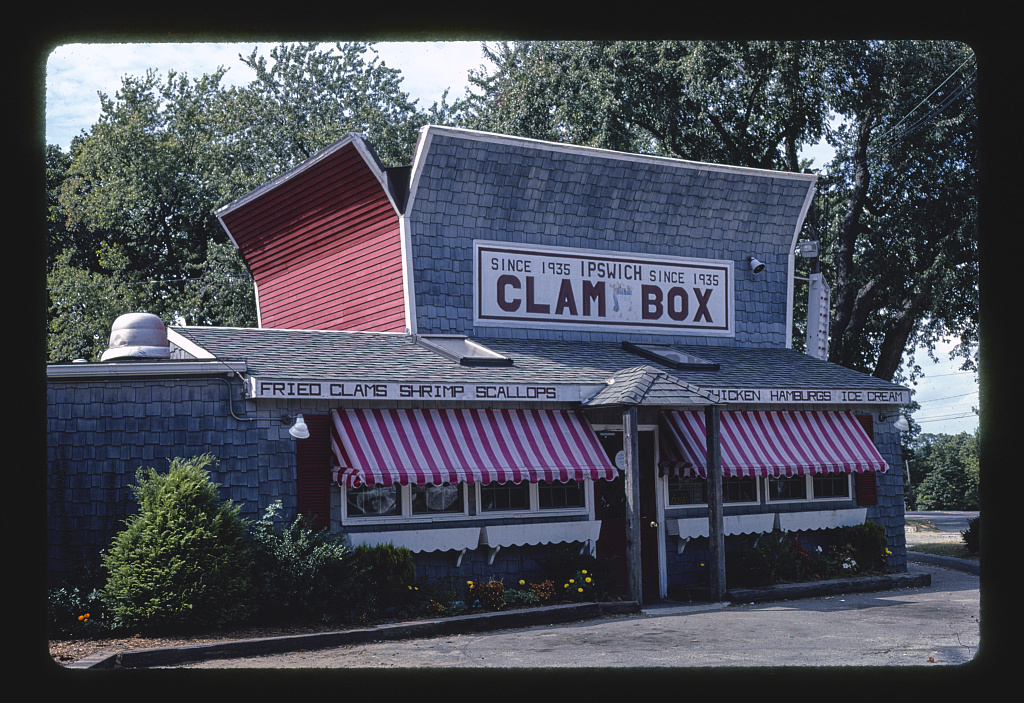
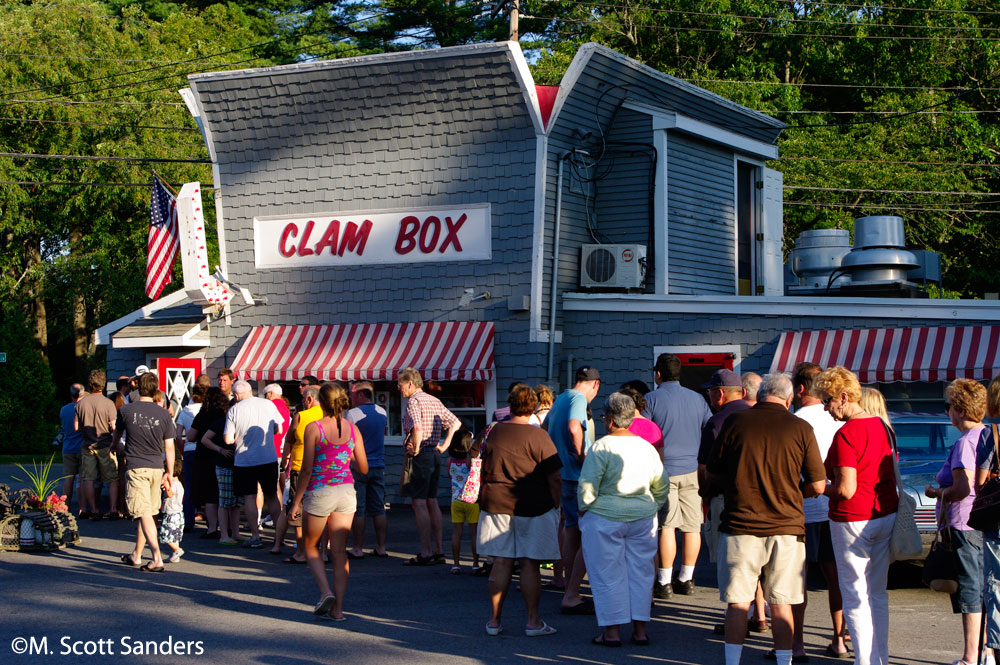 Schell’s in Temple, PA, north of Reading, has been a mainstay. When I saw his shot, I was sad and a little disappointed that the extra features on the sign no longer exist.
Schell’s in Temple, PA, north of Reading, has been a mainstay. When I saw his shot, I was sad and a little disappointed that the extra features on the sign no longer exist.
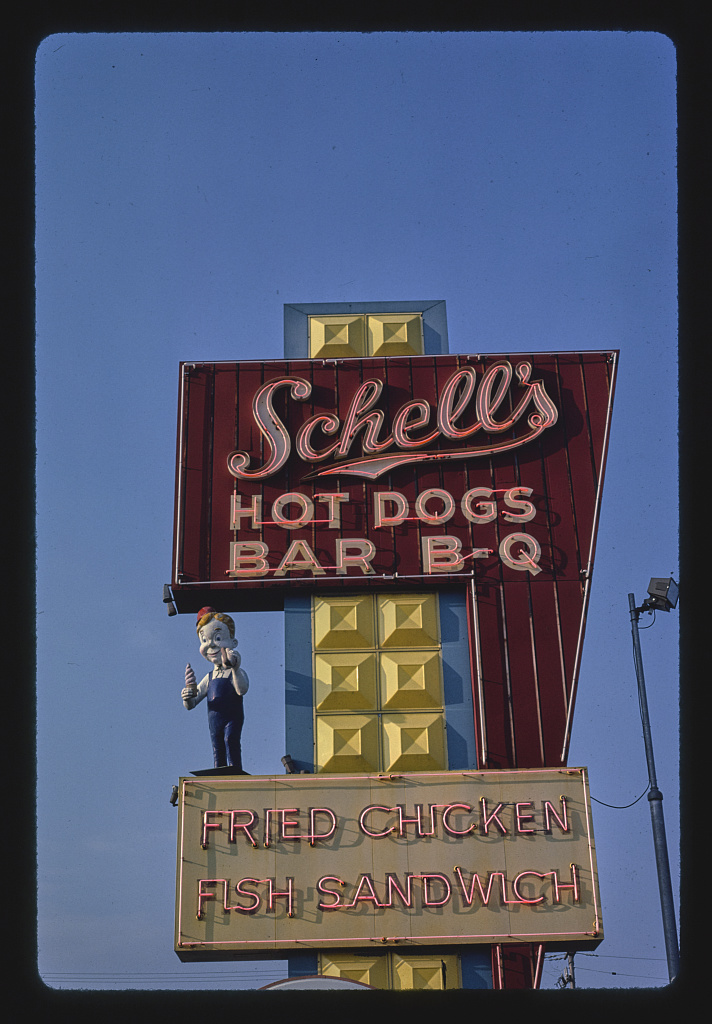
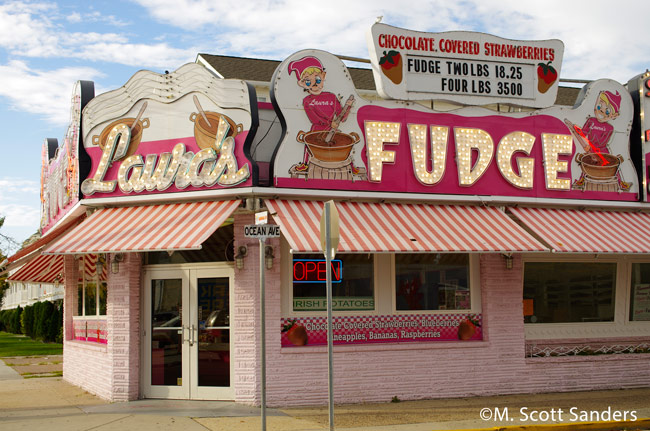
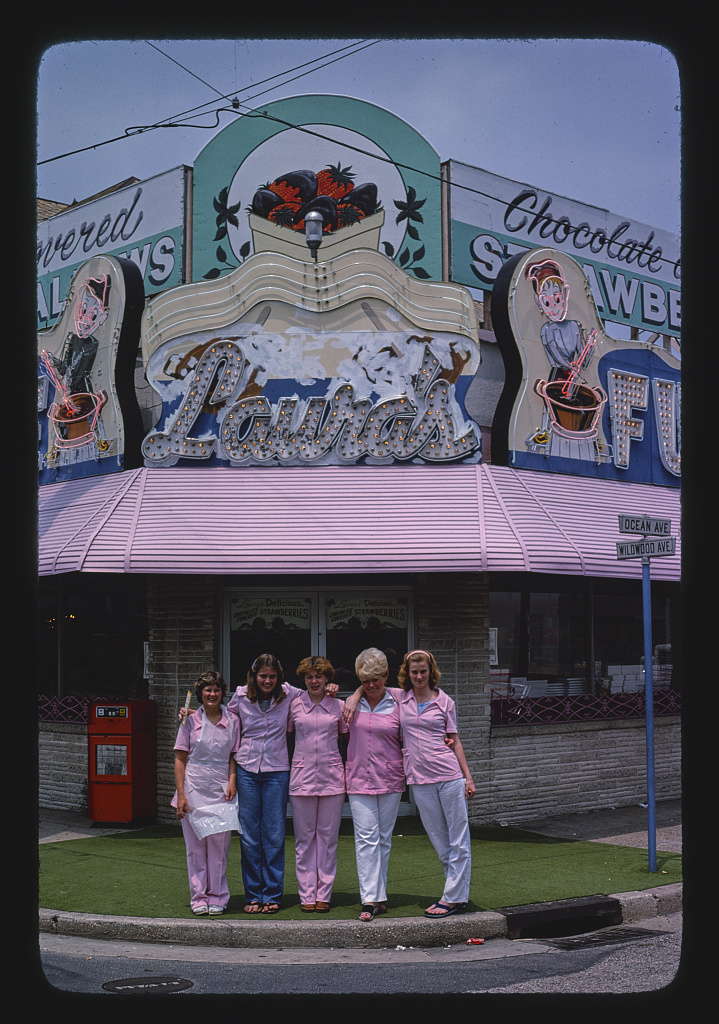
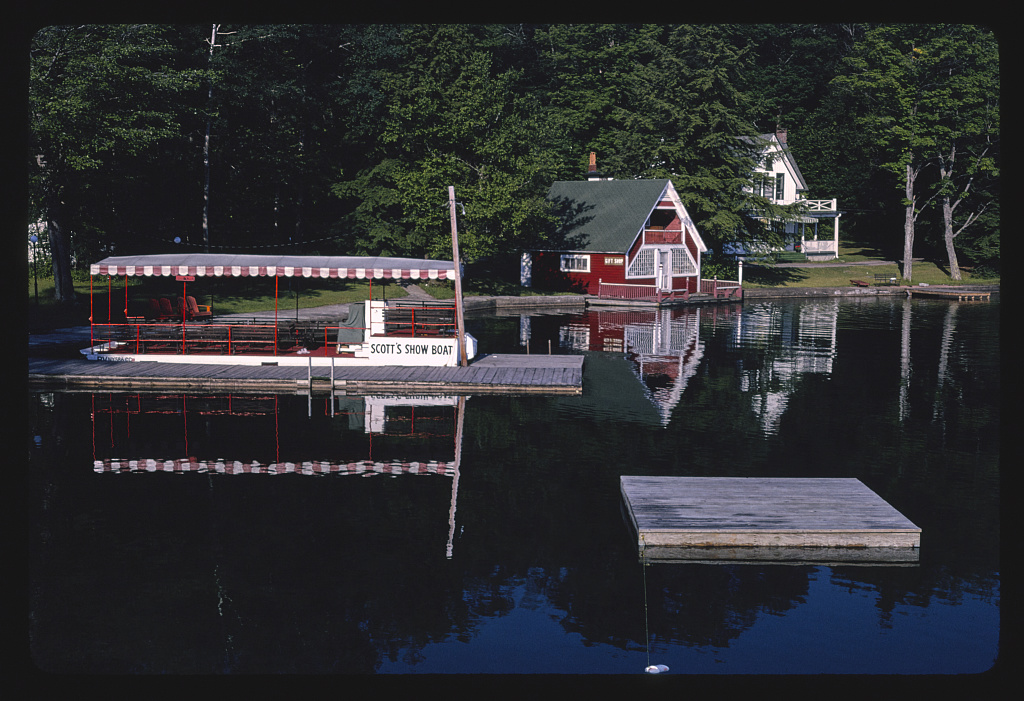
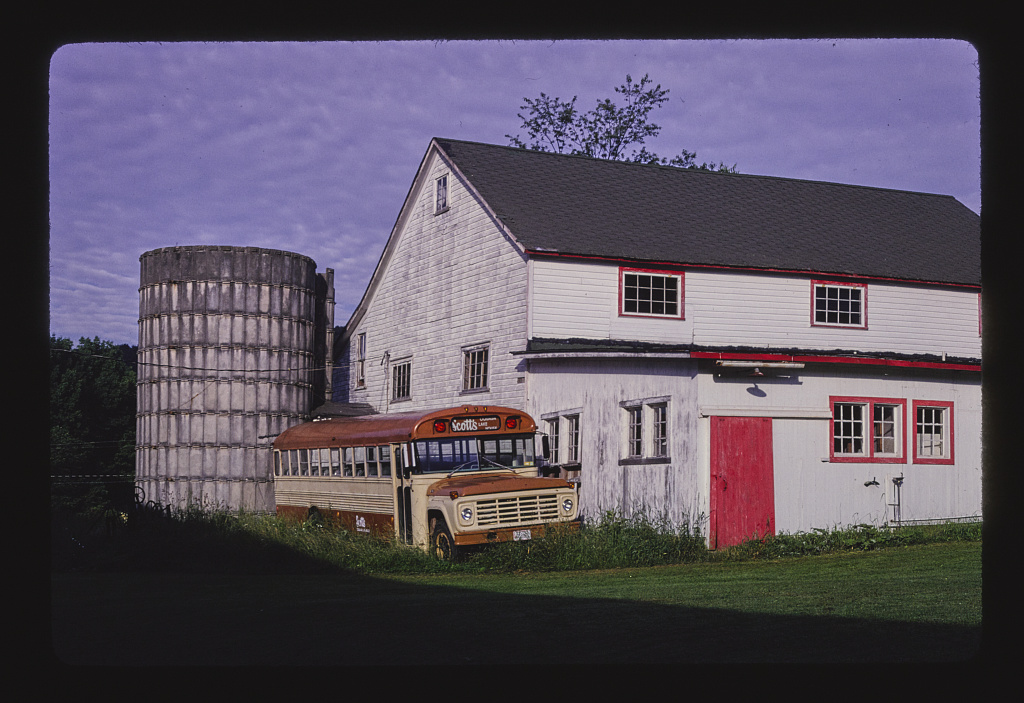
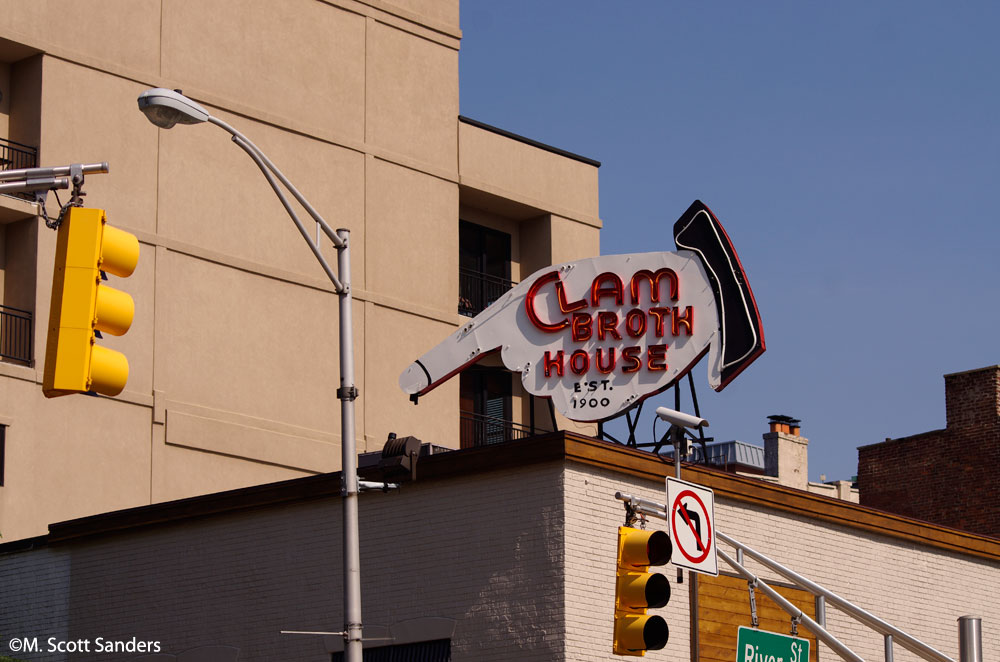
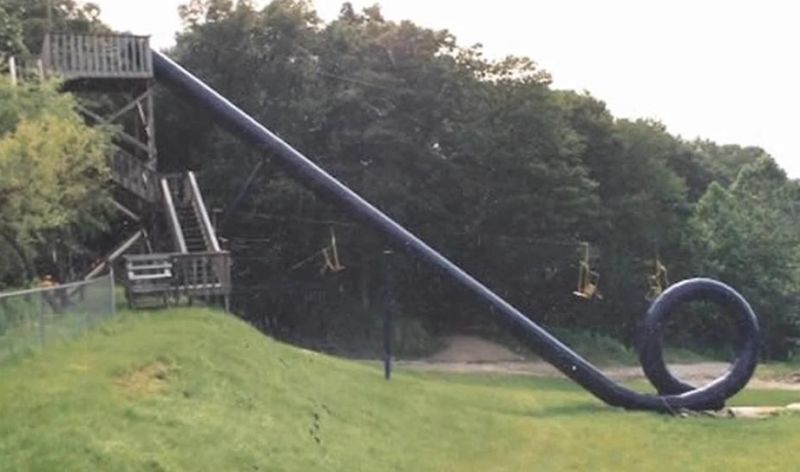 (Those of you not from New Jersey, this is the Cannonball Loop from Action Park, a ride so unsafe they shut it down after a month. Reportedly they sent dummies down it to test it, and after one came down with all its limbs intact, it was declared safe.)
(Those of you not from New Jersey, this is the Cannonball Loop from Action Park, a ride so unsafe they shut it down after a month. Reportedly they sent dummies down it to test it, and after one came down with all its limbs intact, it was declared safe.)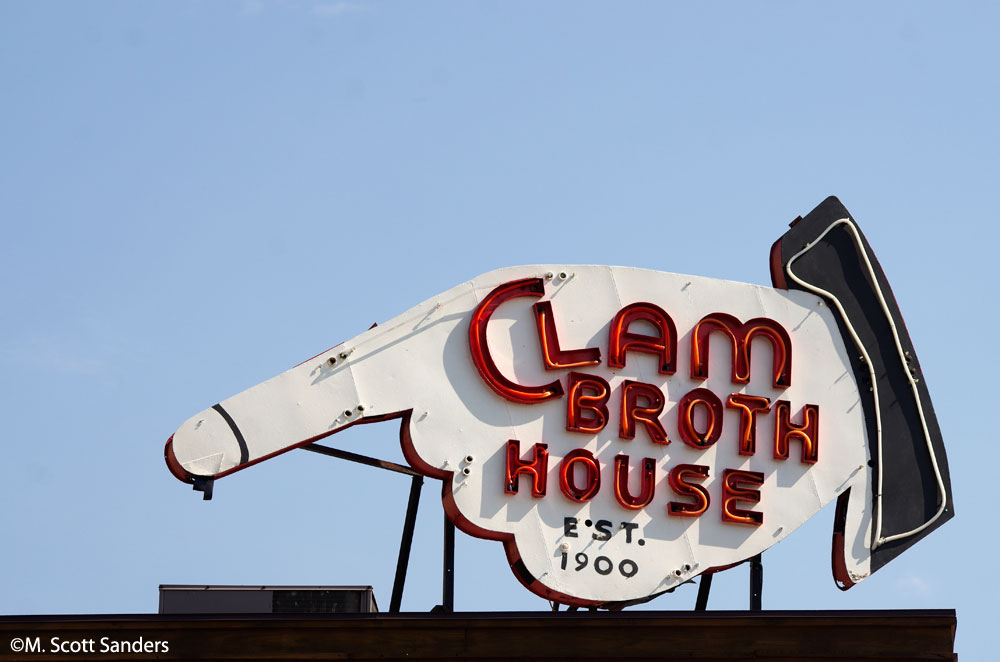
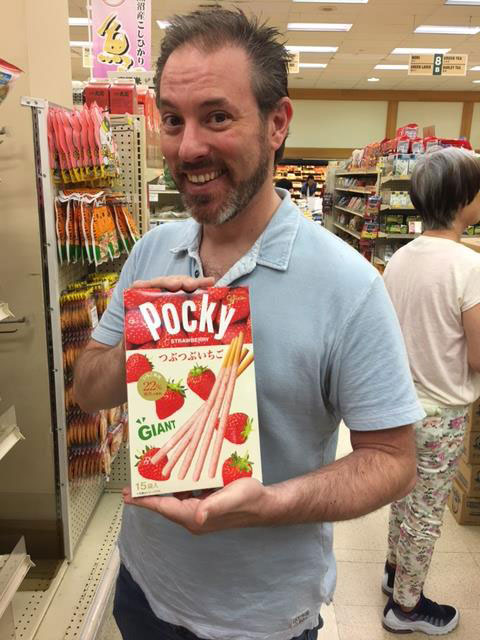
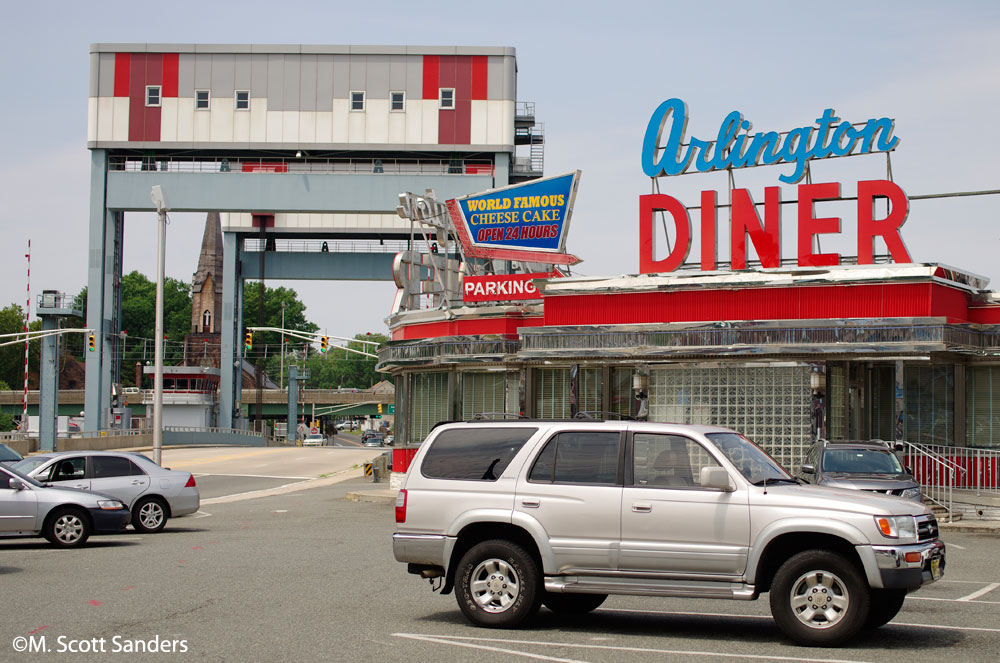
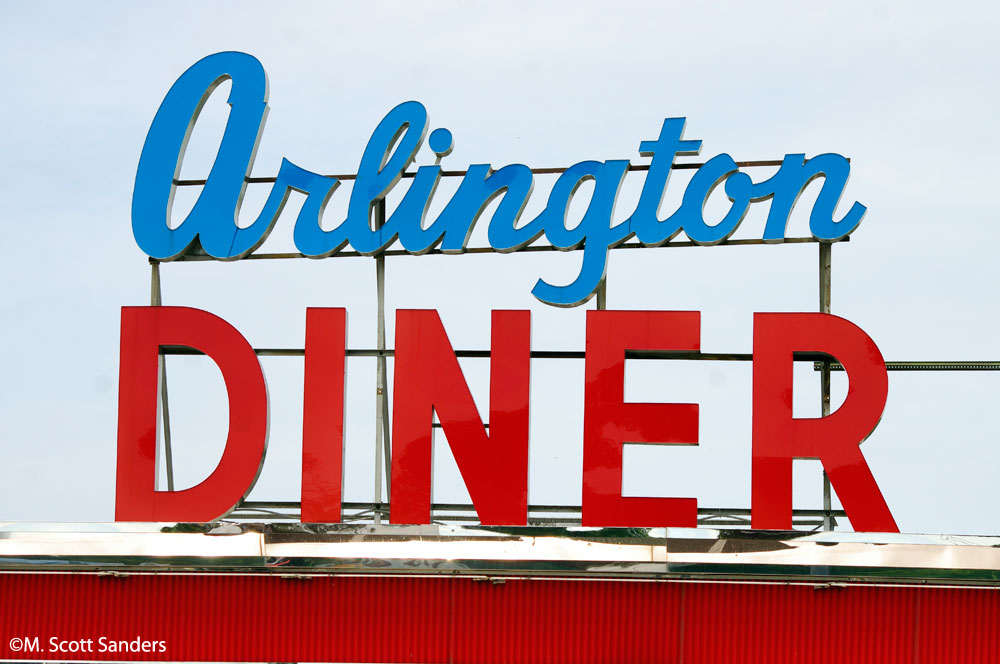
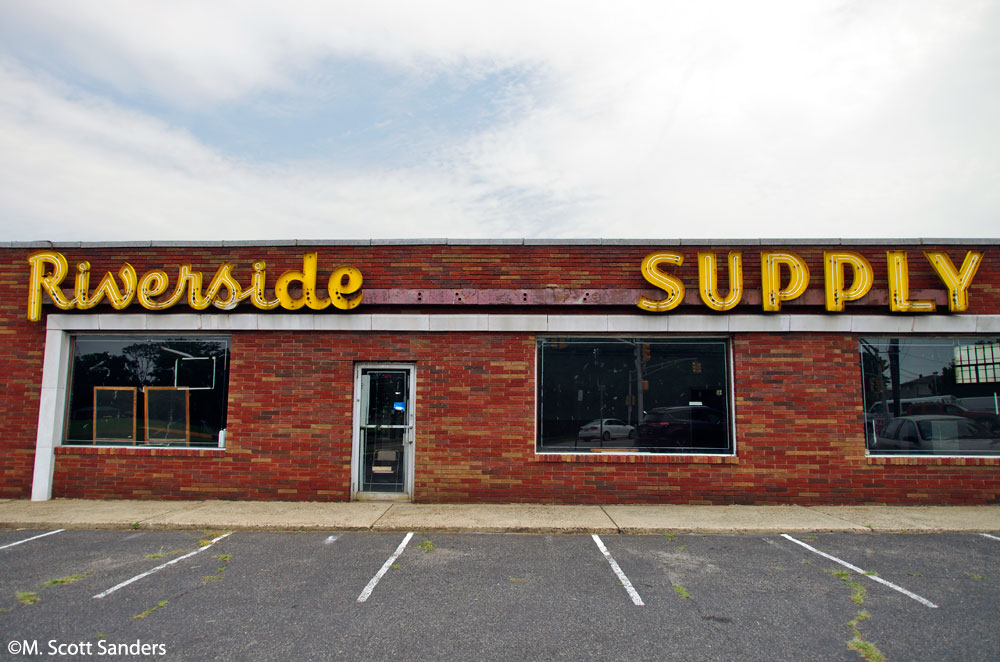
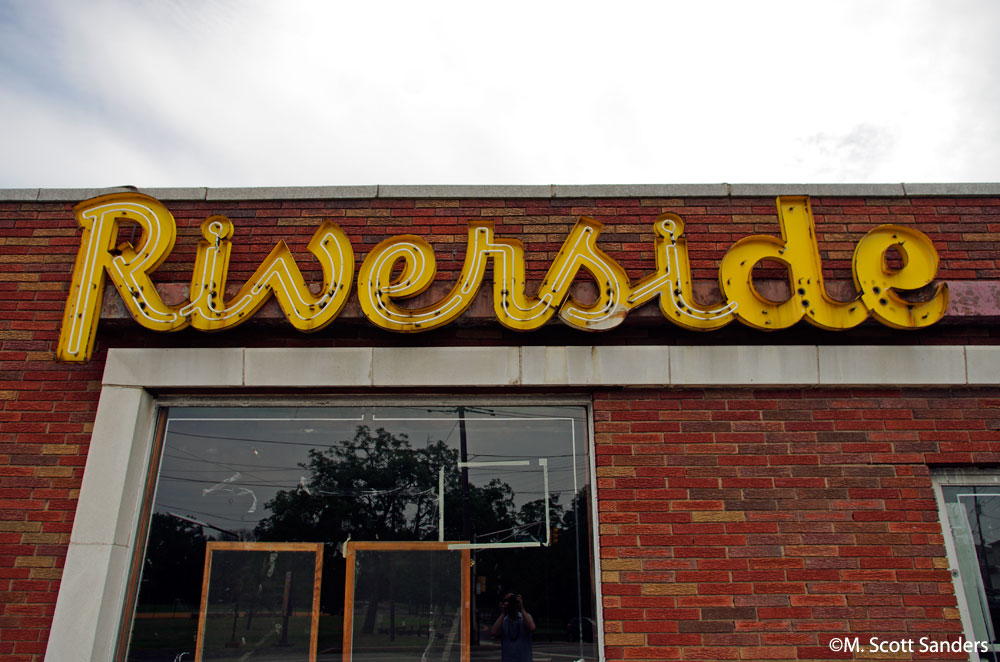
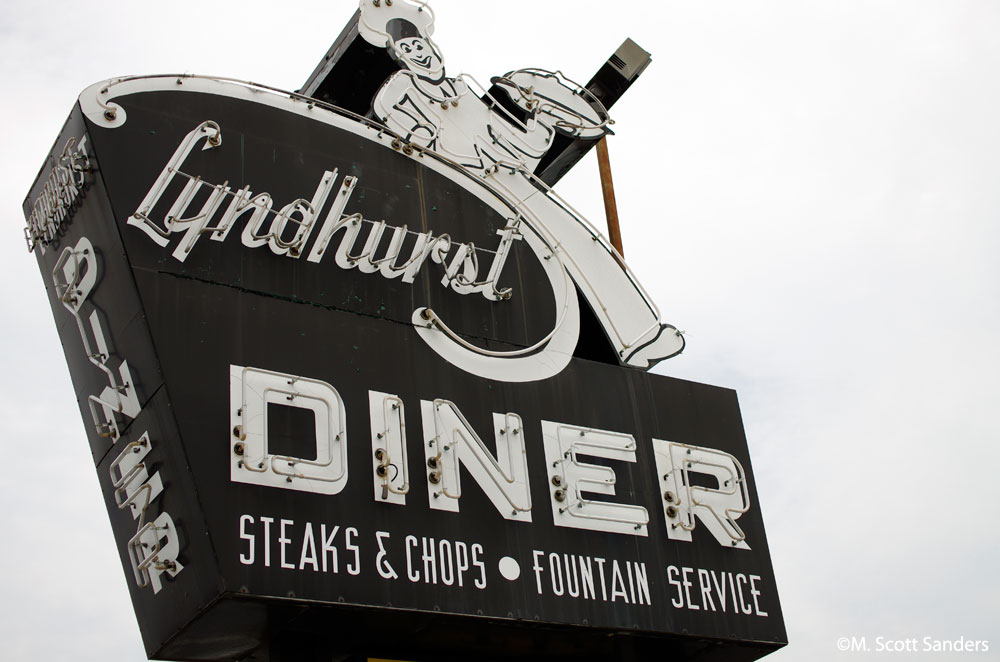
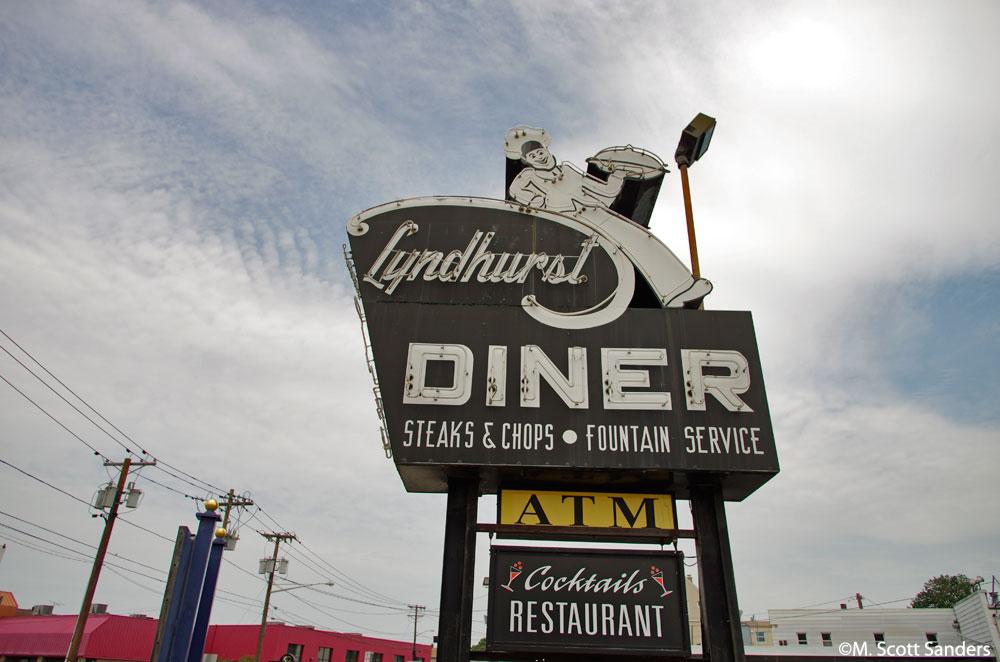

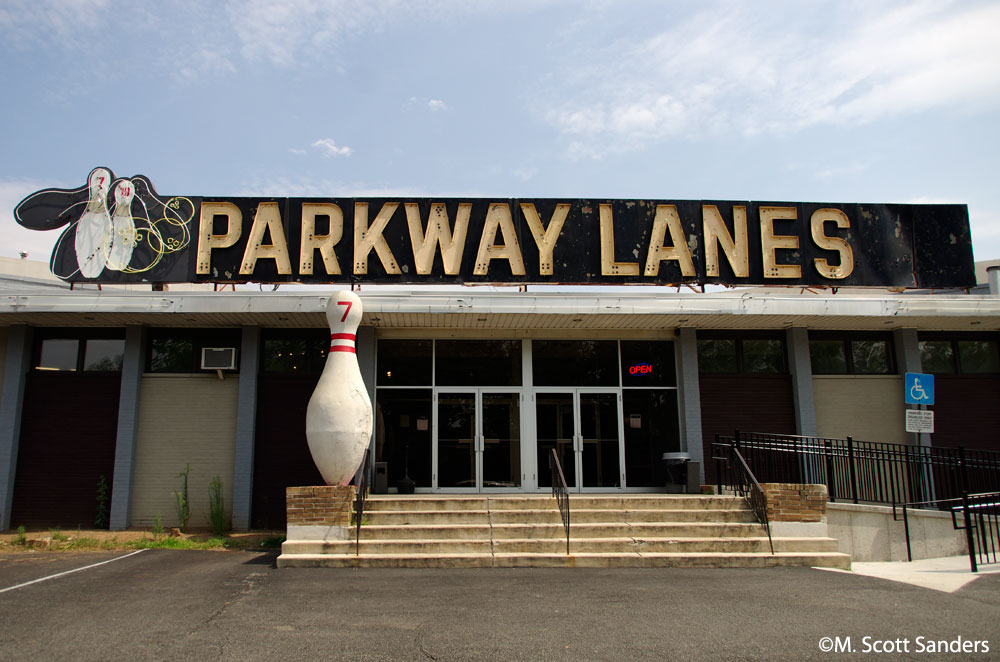 OH, she said, once we pulled in to the parking lot.
OH, she said, once we pulled in to the parking lot.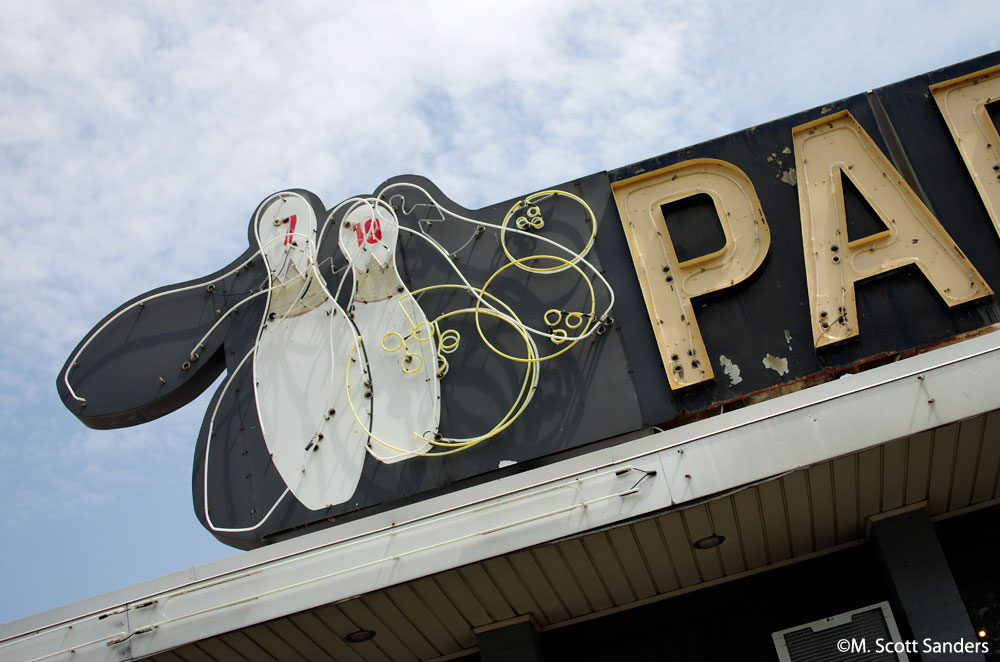 As I looked closer, I noticed there was some broken neon in some of the pins, so the animation looks like it’s a thing of the past.
As I looked closer, I noticed there was some broken neon in some of the pins, so the animation looks like it’s a thing of the past.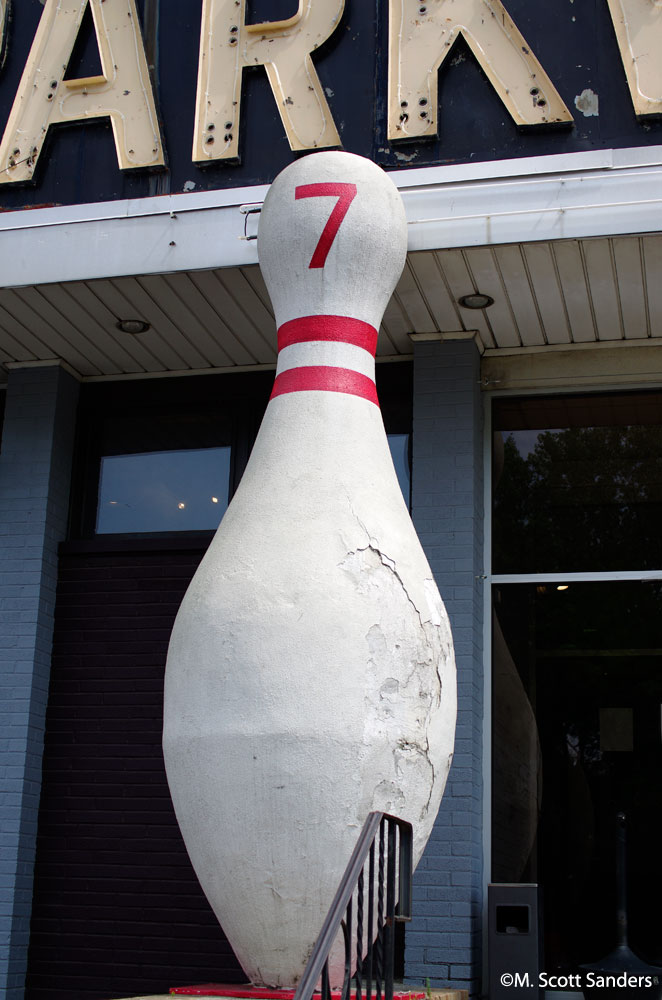 We headed back on US 46, because, as I’ve learned from experience, the best old signs are on the old U.S. highways. Sure enough, a few miles down the road, we spot a motel:
We headed back on US 46, because, as I’ve learned from experience, the best old signs are on the old U.S. highways. Sure enough, a few miles down the road, we spot a motel: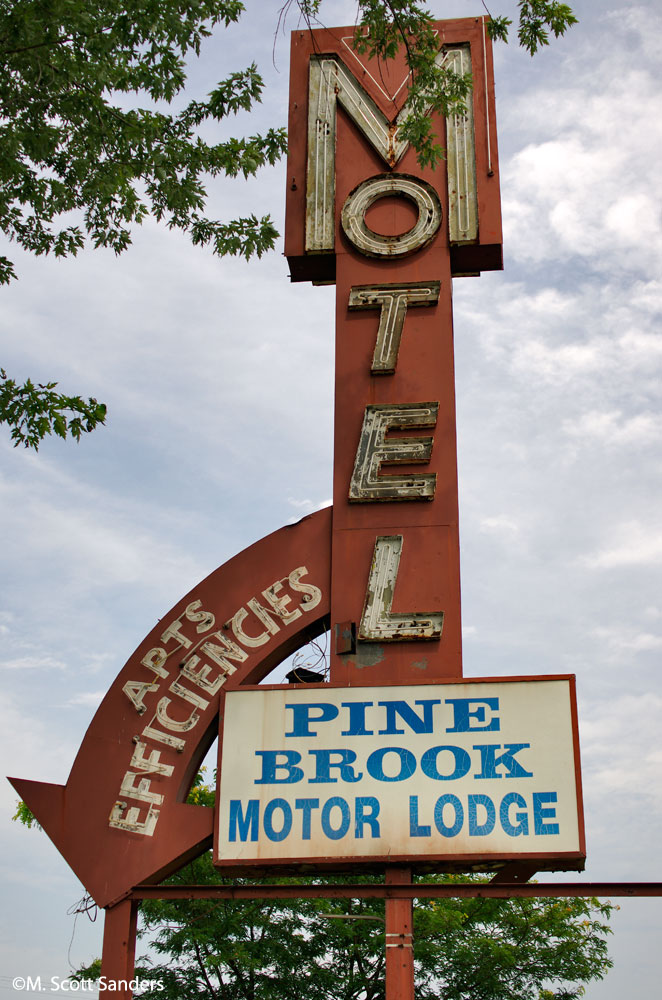 Normally with motels, I will ask first before shooting, but there was nobody parked out front, and I made the assumption that this place was no longer in operation. It wasn’t until I took this shot of breezeway bricks that I suddenly noticed something:
Normally with motels, I will ask first before shooting, but there was nobody parked out front, and I made the assumption that this place was no longer in operation. It wasn’t until I took this shot of breezeway bricks that I suddenly noticed something: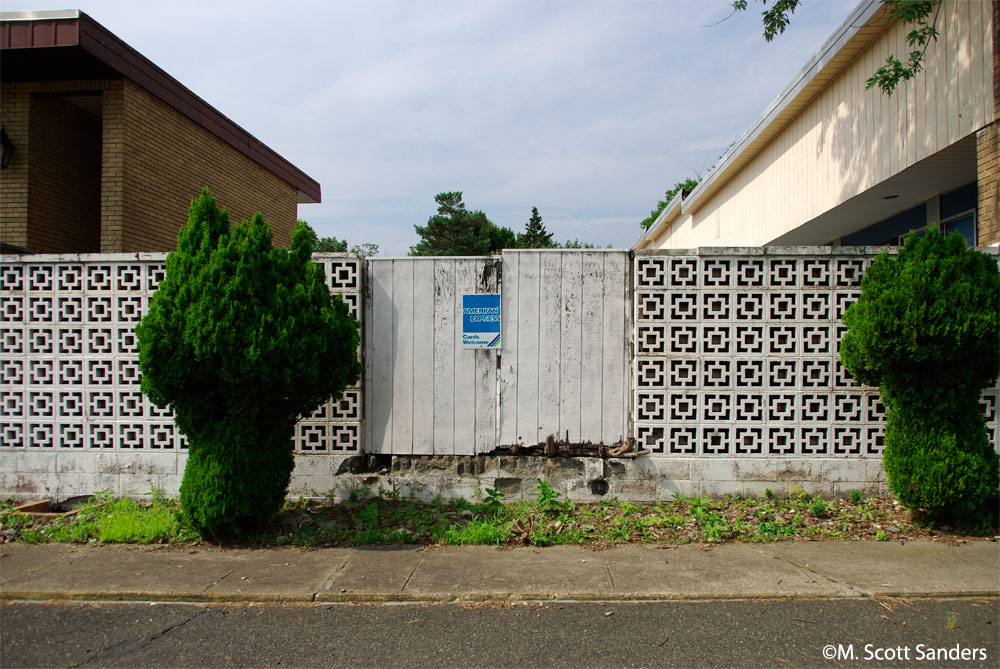 Um…those bushes didn’t grow that way naturally. As I hopped in the car and started off, we passed the office, and sure enough, there was somebody in there. So, please forgive me, good folks at the Pine Brook Motor Lodge. Next time I’ll check in at the desk.
Um…those bushes didn’t grow that way naturally. As I hopped in the car and started off, we passed the office, and sure enough, there was somebody in there. So, please forgive me, good folks at the Pine Brook Motor Lodge. Next time I’ll check in at the desk.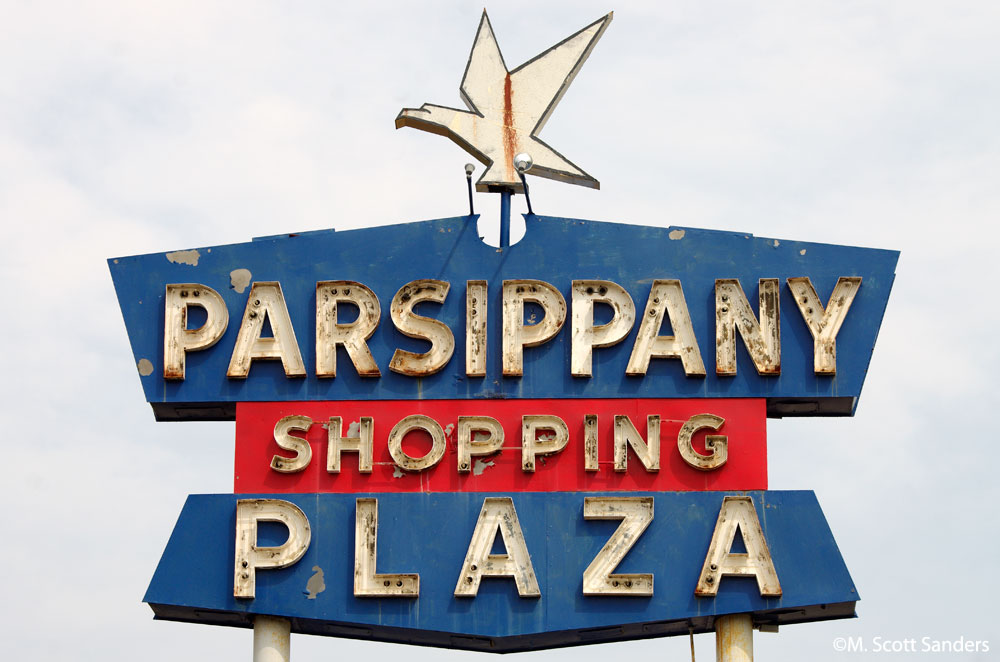
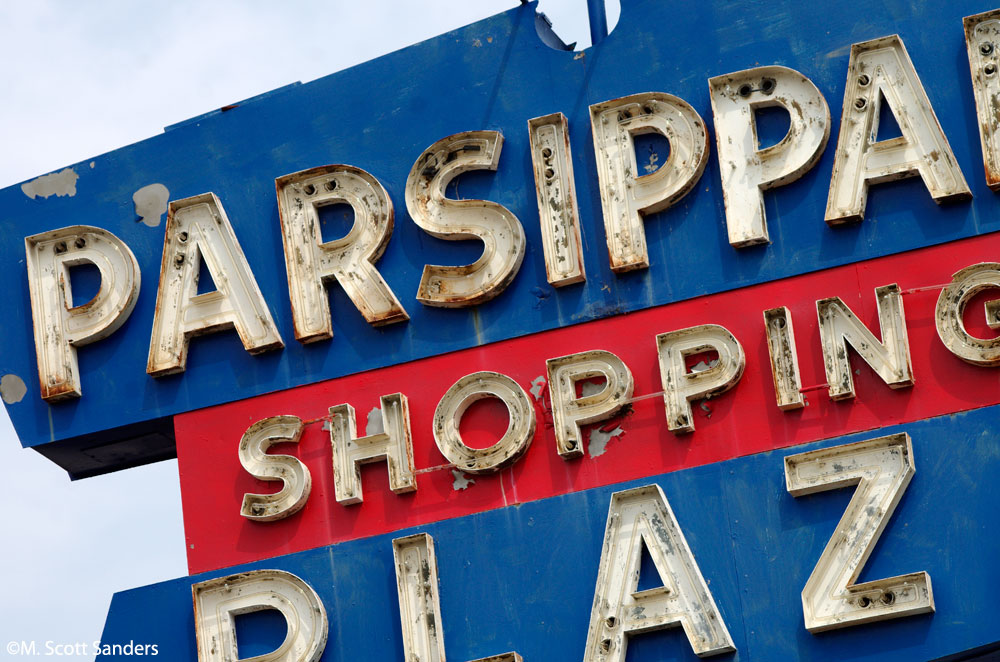
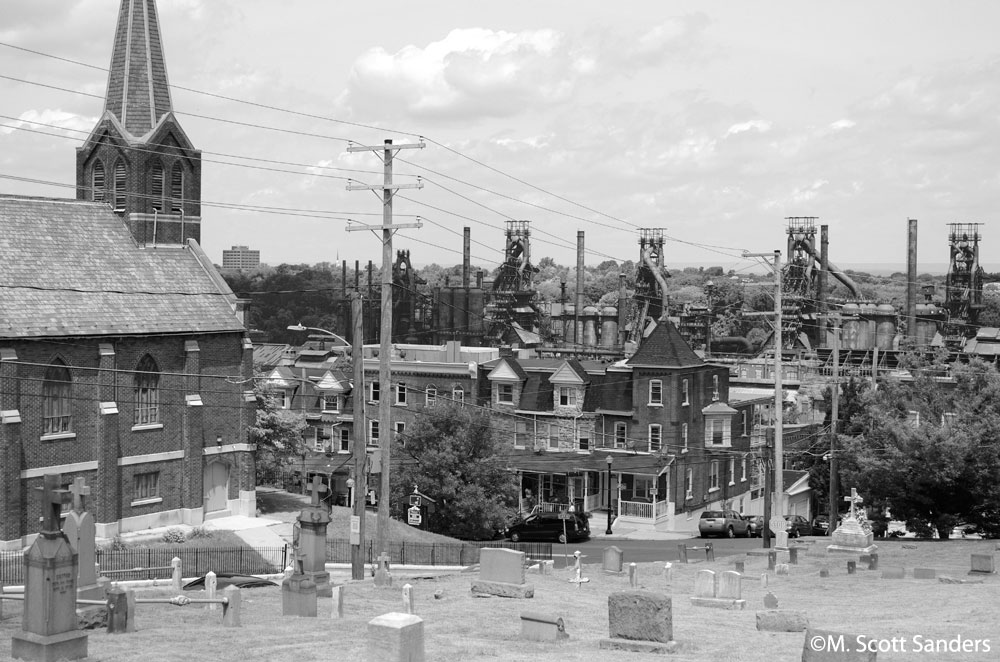
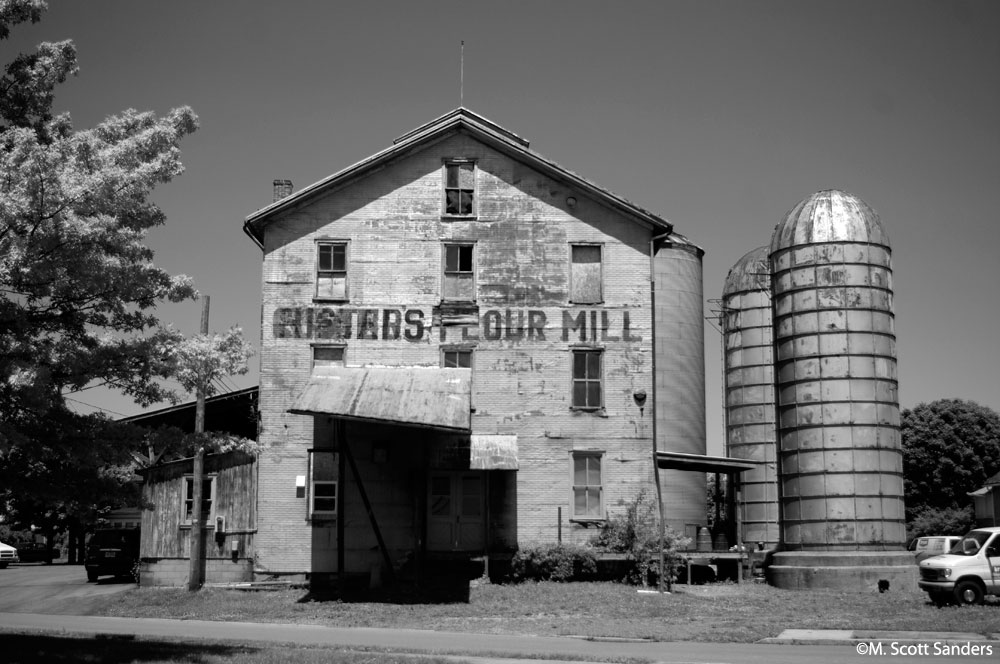 When I first started doing Instagram, I posted a picture of the Flour Mill above. One of my friends, who is an architect and knows about stuff, complimented me and said it reminded him of Walker Evans. I thanked him, then promptly Googled ‘Walker Evans.’ Pretty quickly, I realized how much of a compliment it was, even though I had no intention of taking this or any other picture in anybody’s style.
When I first started doing Instagram, I posted a picture of the Flour Mill above. One of my friends, who is an architect and knows about stuff, complimented me and said it reminded him of Walker Evans. I thanked him, then promptly Googled ‘Walker Evans.’ Pretty quickly, I realized how much of a compliment it was, even though I had no intention of taking this or any other picture in anybody’s style.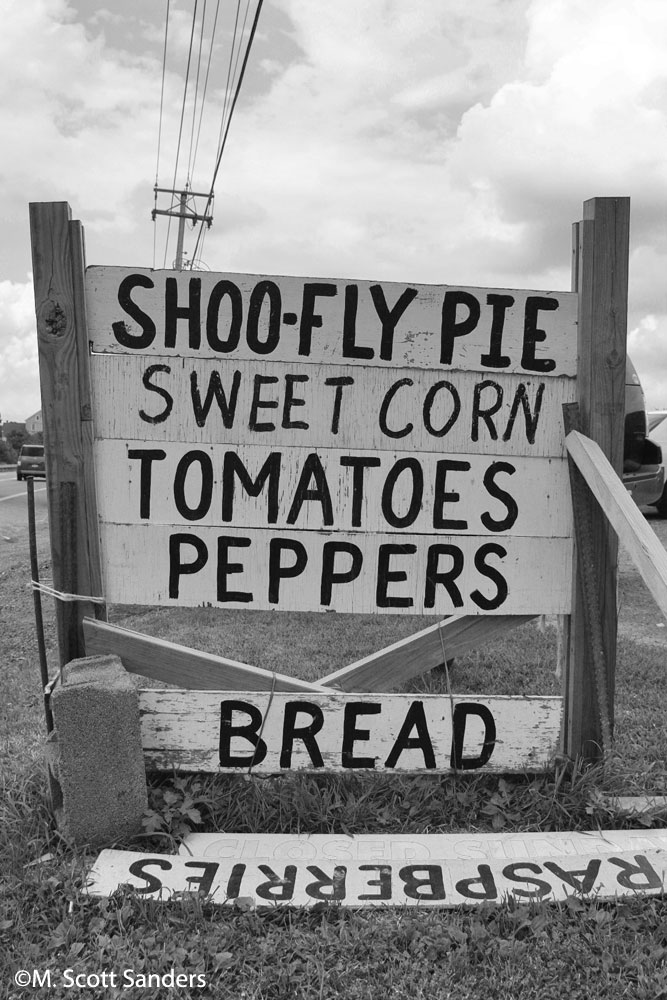
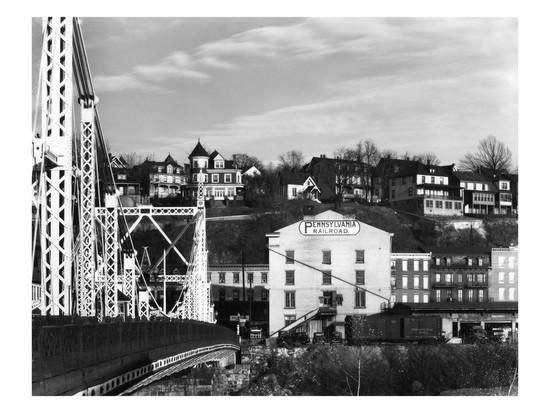
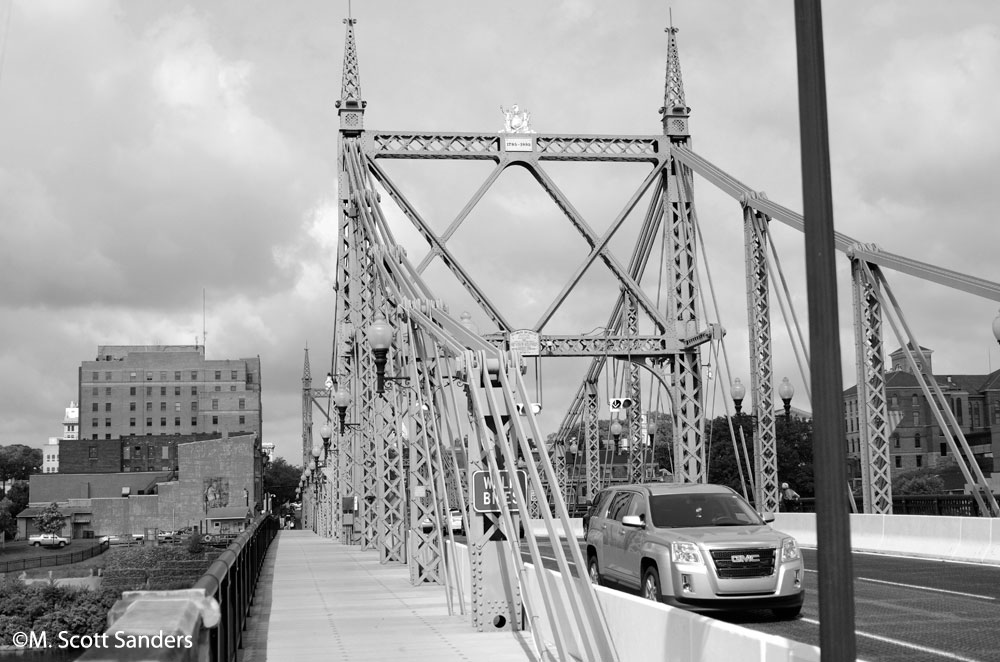 Also, look back at Evans’ picture, at the buildings visible just to the right of the railroad building and just to the left of the bridge. Believe it or not, those buildings still stand, restored.
Also, look back at Evans’ picture, at the buildings visible just to the right of the railroad building and just to the left of the bridge. Believe it or not, those buildings still stand, restored.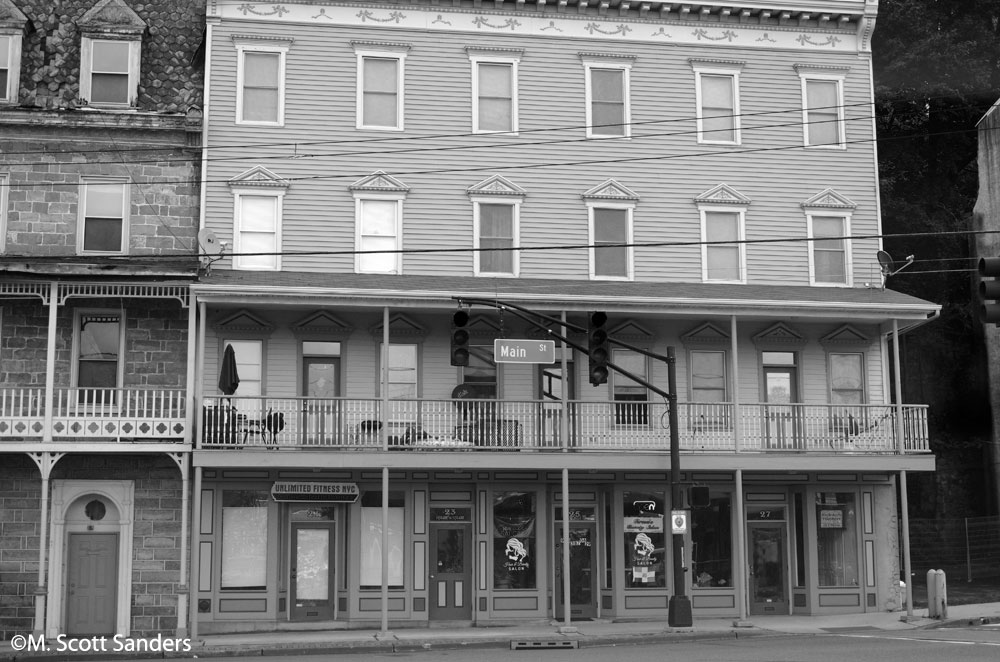 We came back over the Free Bridge and parked, and along the way to the Farmer’s Market, I saw a shop that seemed to step right out of the 1930’s in every single way. I figured, why not? If I’m going to do an hommage, I might as well go the whole hommage.
We came back over the Free Bridge and parked, and along the way to the Farmer’s Market, I saw a shop that seemed to step right out of the 1930’s in every single way. I figured, why not? If I’m going to do an hommage, I might as well go the whole hommage.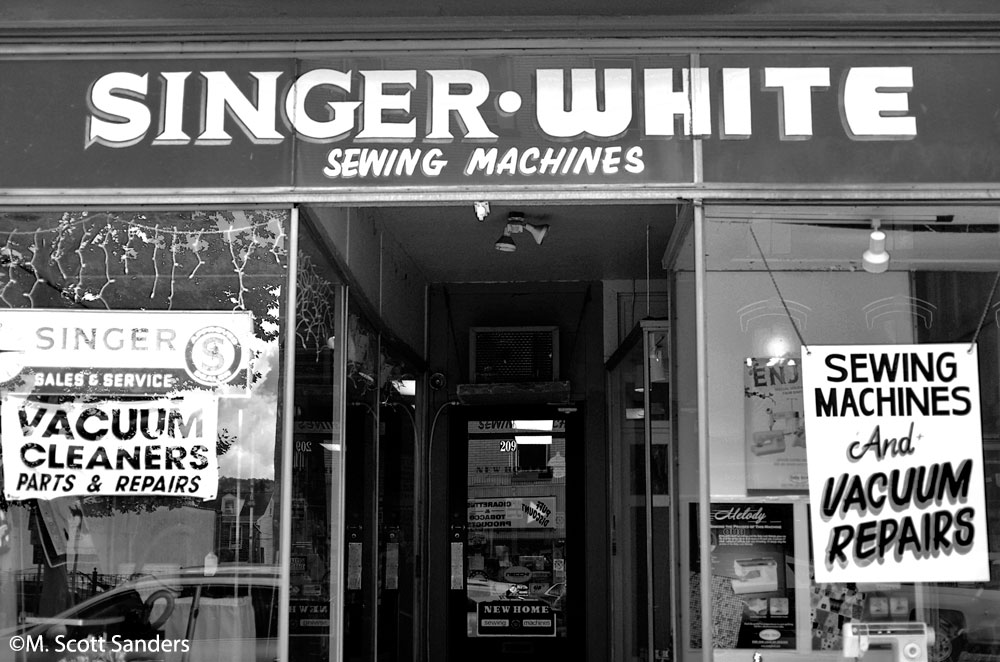 And off we went, figuring we had done a day’s work. The Farmer’s Market was terrific, and we loaded up on fresh produce and bread and kombucha.
And off we went, figuring we had done a day’s work. The Farmer’s Market was terrific, and we loaded up on fresh produce and bread and kombucha.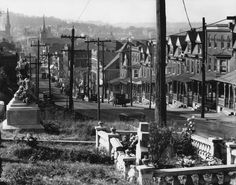
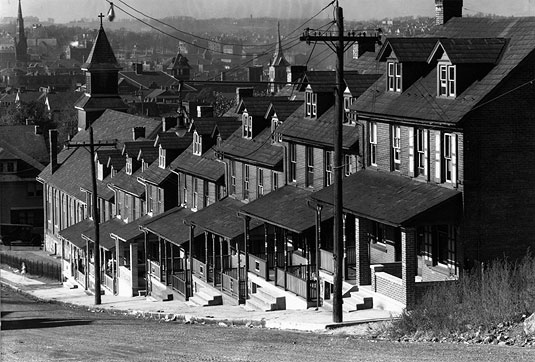
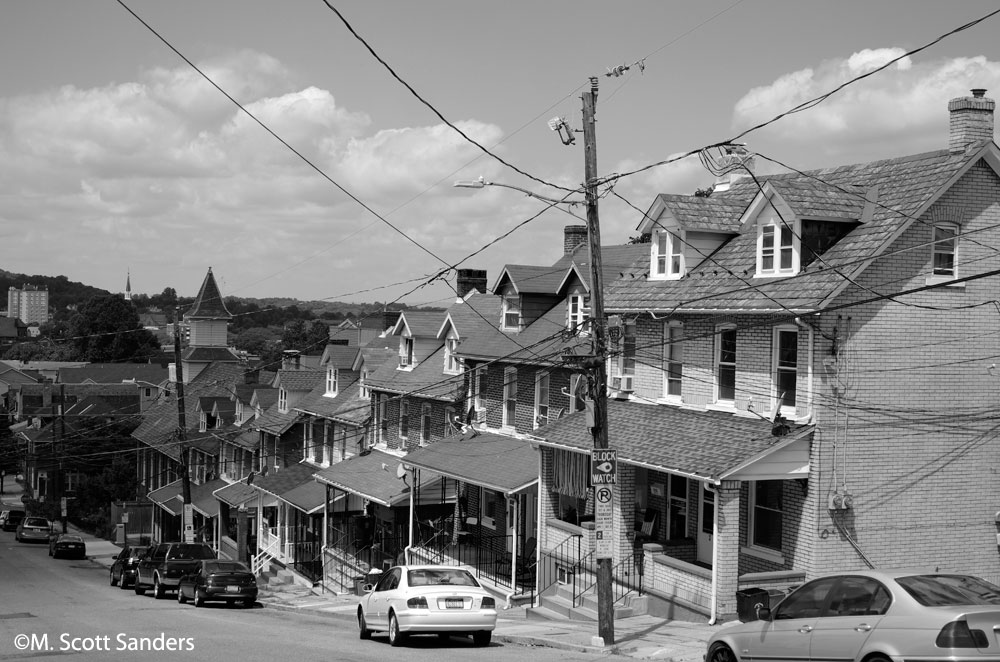 The cemetery, though. Not a coincidence. When I got to the top of the hill, I knew exactly why Evans and Sekaer had chosen it.
The cemetery, though. Not a coincidence. When I got to the top of the hill, I knew exactly why Evans and Sekaer had chosen it.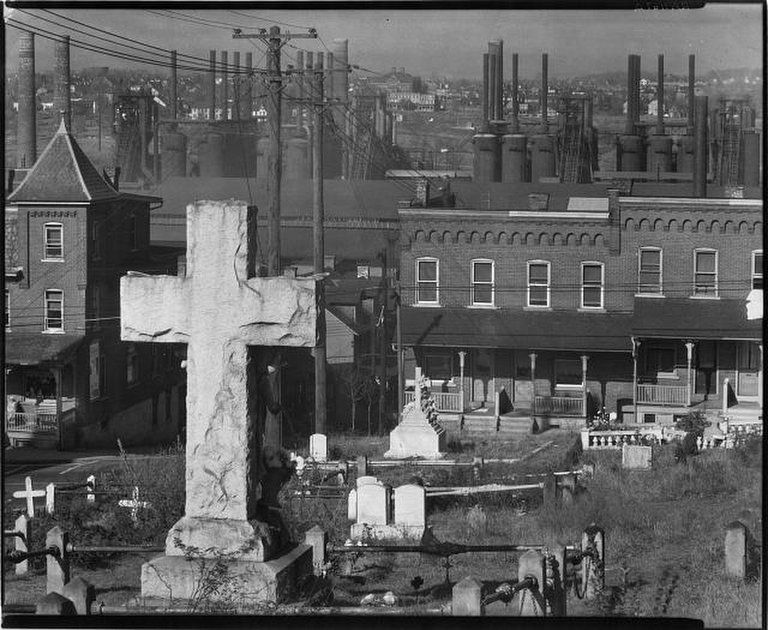
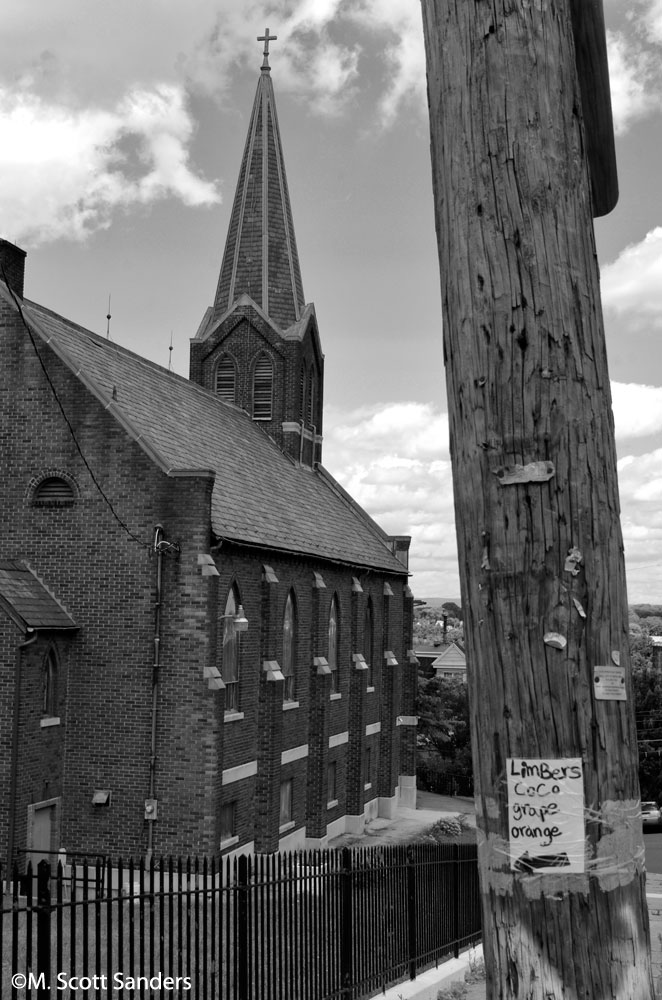
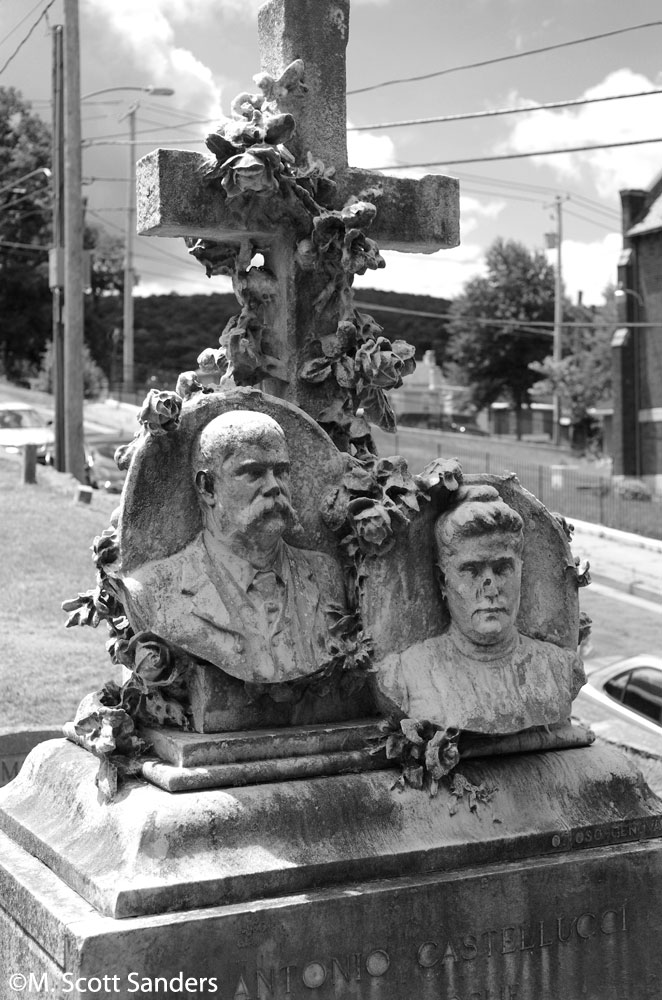
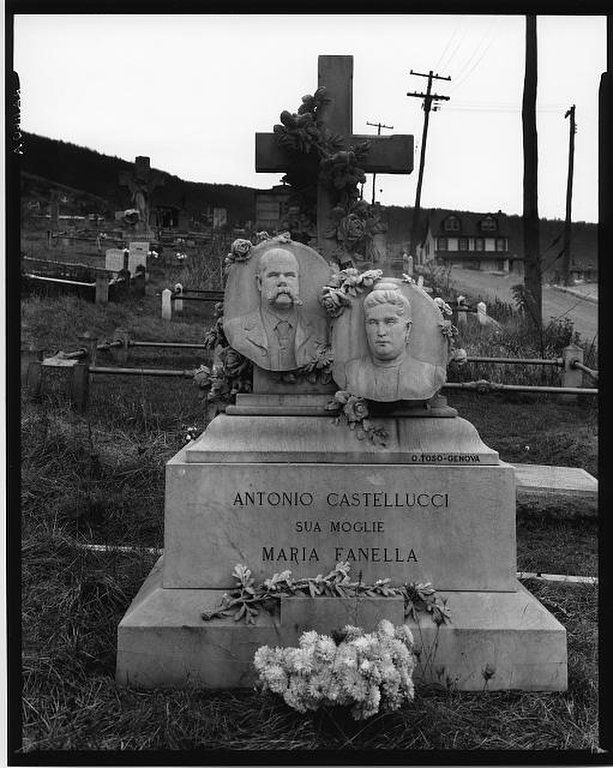
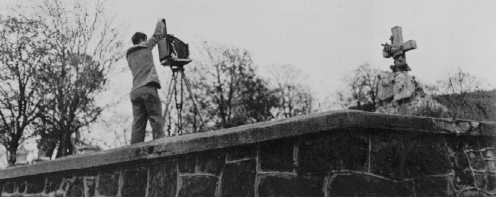 As I saw the gigantic view camera on the tripod, I was amazed how easy it is for me to go around getting shots of everything. During the last years of his life, he took photographs specifically with a Polaroid, because due to ill health, it was much easier on him not lugging around all that equipment.
As I saw the gigantic view camera on the tripod, I was amazed how easy it is for me to go around getting shots of everything. During the last years of his life, he took photographs specifically with a Polaroid, because due to ill health, it was much easier on him not lugging around all that equipment.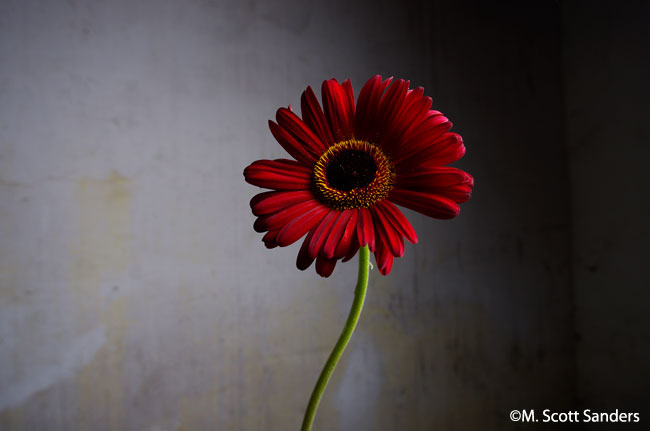
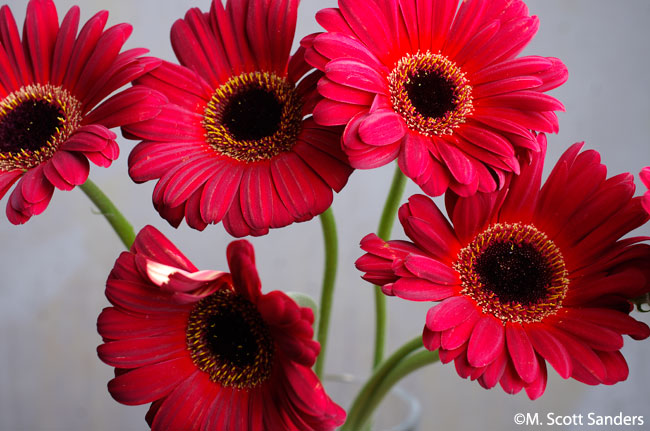 I couldn’t resist. The sunflowers showed me how vibrant colors showed up in the studio, so when I saw these gerber daisies, I knew they had to be the next group. The centers looked like eyes, how could I say no? The stems weren’t that thin, and in fact, when I looked at the back of them, it appeared that a wilted version of this flower might be very interesting. I took several shots from the reverse side the first day I had them.
I couldn’t resist. The sunflowers showed me how vibrant colors showed up in the studio, so when I saw these gerber daisies, I knew they had to be the next group. The centers looked like eyes, how could I say no? The stems weren’t that thin, and in fact, when I looked at the back of them, it appeared that a wilted version of this flower might be very interesting. I took several shots from the reverse side the first day I had them.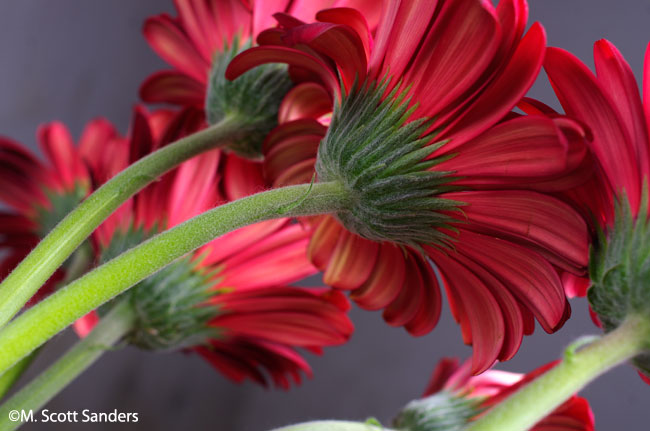
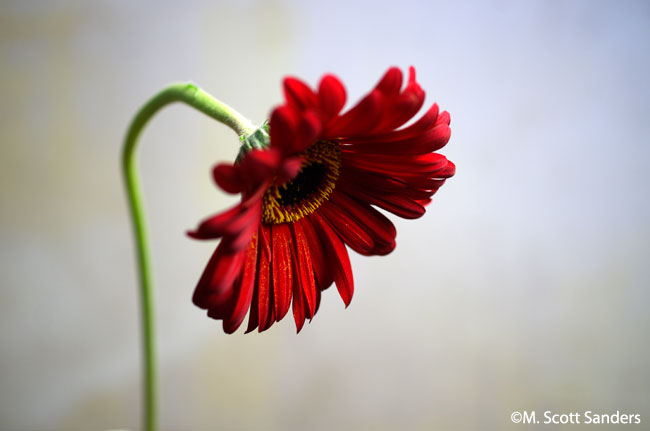 Now I wasn’t seeing an eye, I was seeing a whole face, a head, a neck. It would be fleeting, I knew that, but just for this moment, this group showed me something marvelous. The three that weren’t wilting yet were producing something just as great.
Now I wasn’t seeing an eye, I was seeing a whole face, a head, a neck. It would be fleeting, I knew that, but just for this moment, this group showed me something marvelous. The three that weren’t wilting yet were producing something just as great. These two showed a bit of decay, but for the most part, they were holding up. They had a steadfast quality. I went back later in the day and shot the same flowers, this time, getting more contrast from the background:
These two showed a bit of decay, but for the most part, they were holding up. They had a steadfast quality. I went back later in the day and shot the same flowers, this time, getting more contrast from the background: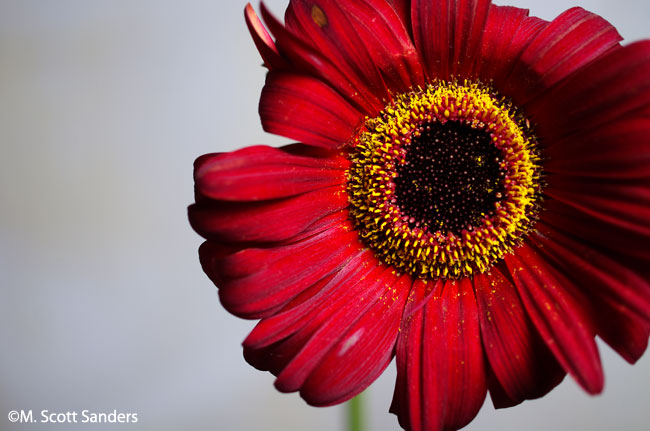 …looked like a staring eye. I took several shots of this particular one on day 6. This one was my favorite. As the days passed the yellow flecks became more and more prominent, adding a nice color accent to the image. Meanwhile, the three drooping daisies got droopier.
…looked like a staring eye. I took several shots of this particular one on day 6. This one was my favorite. As the days passed the yellow flecks became more and more prominent, adding a nice color accent to the image. Meanwhile, the three drooping daisies got droopier.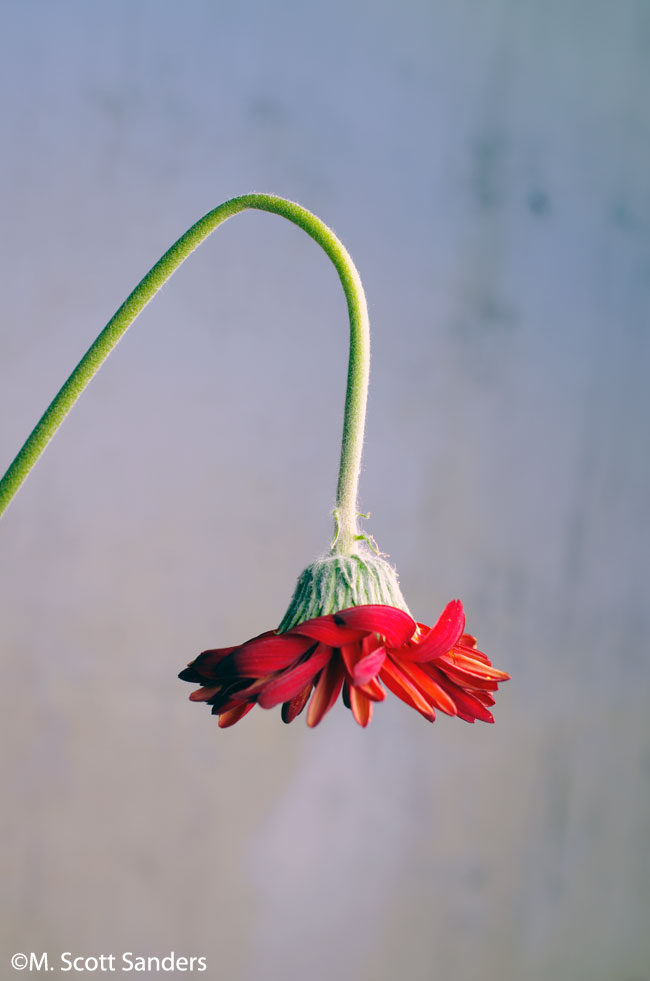 The petals, instead of dropping off or hardening to a crisp, wrapped themselves back and around, giving a strange motion to the still image, as if the whole flower were rotating on the axis of its stem. This would get less pronounced by day 9, when the petals began to dry. They began to resemble bells.
The petals, instead of dropping off or hardening to a crisp, wrapped themselves back and around, giving a strange motion to the still image, as if the whole flower were rotating on the axis of its stem. This would get less pronounced by day 9, when the petals began to dry. They began to resemble bells.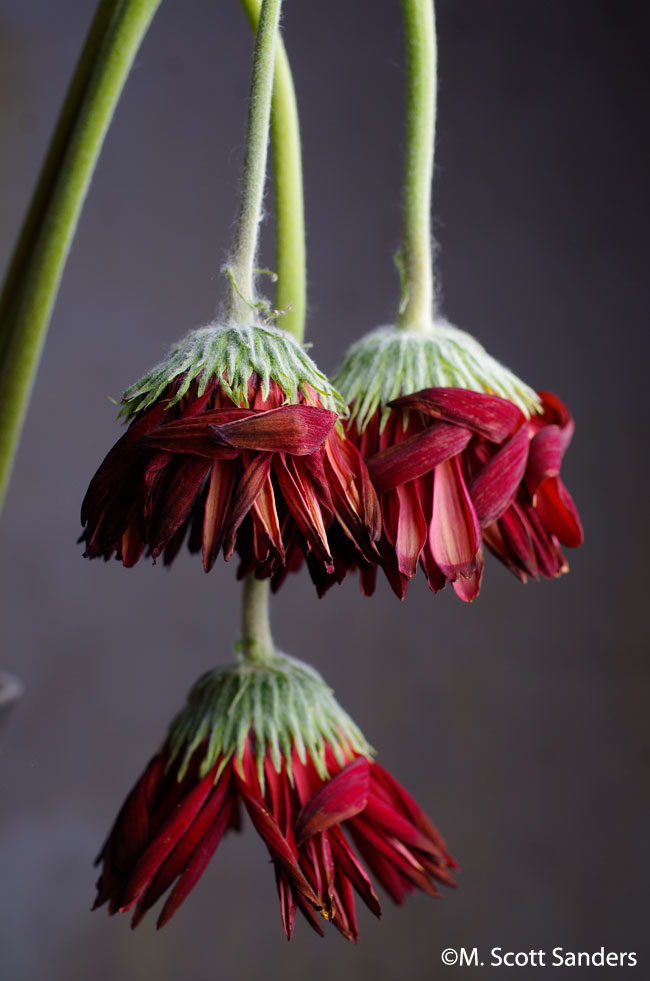
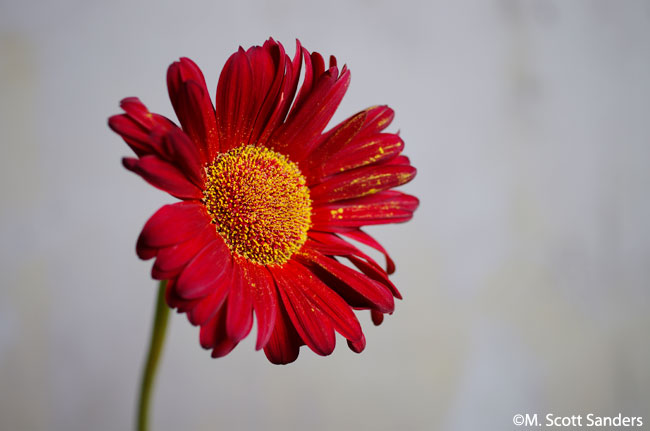
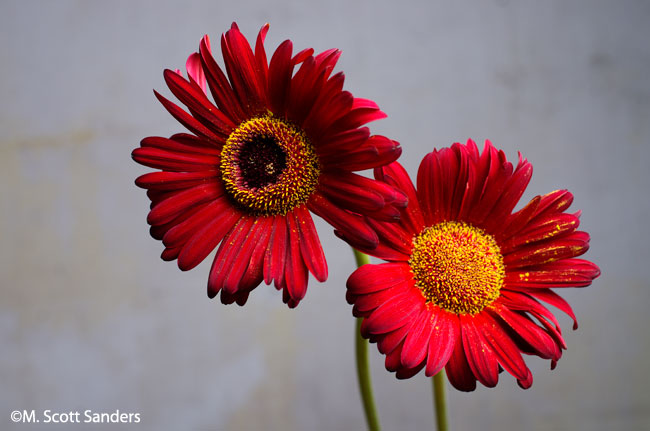
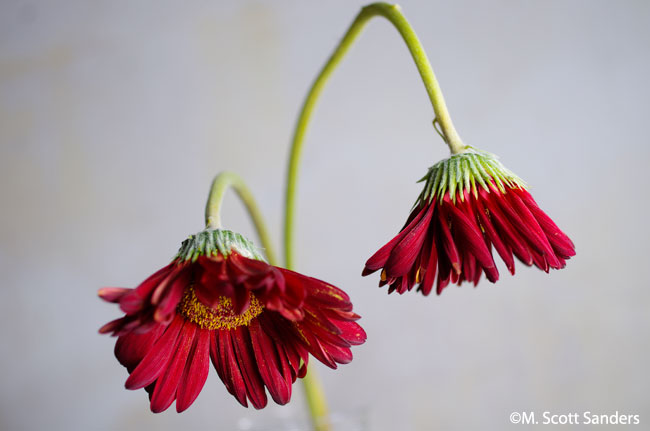 No two things are the same, nor would we want them to be. If all of these flowers, and if all of us, did the same exact thing in the same exact way, what would be the point? There are so many different things we can be. When it comes to beauty, similarity can only go so far before it loses its appeal. It is in diversity that we can see a myriad of beauty, and in each one of these flowers I saw something new, unique and exciting.
No two things are the same, nor would we want them to be. If all of these flowers, and if all of us, did the same exact thing in the same exact way, what would be the point? There are so many different things we can be. When it comes to beauty, similarity can only go so far before it loses its appeal. It is in diversity that we can see a myriad of beauty, and in each one of these flowers I saw something new, unique and exciting.